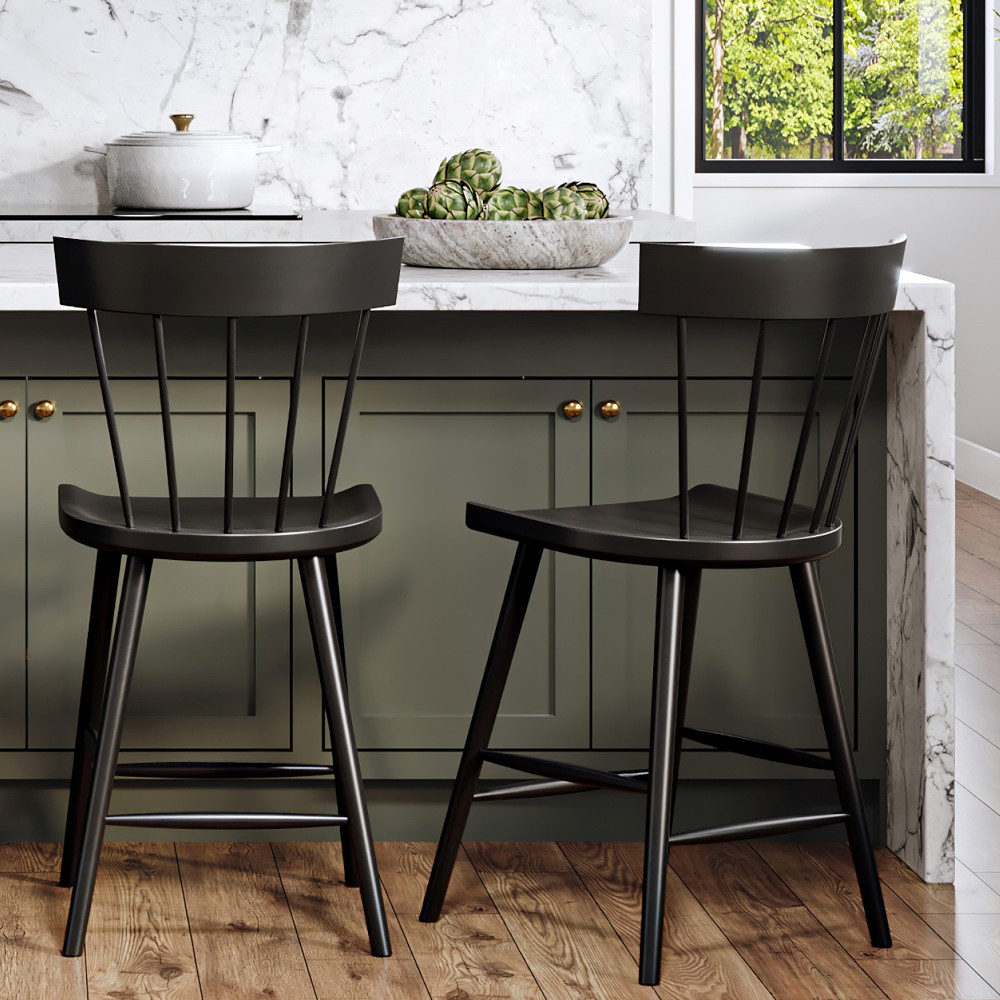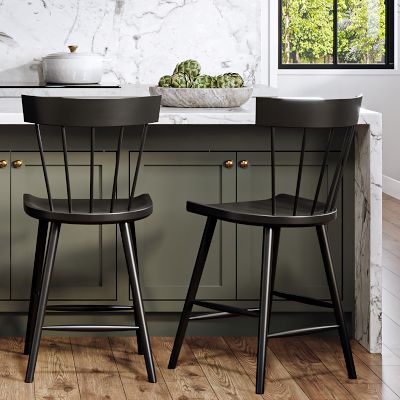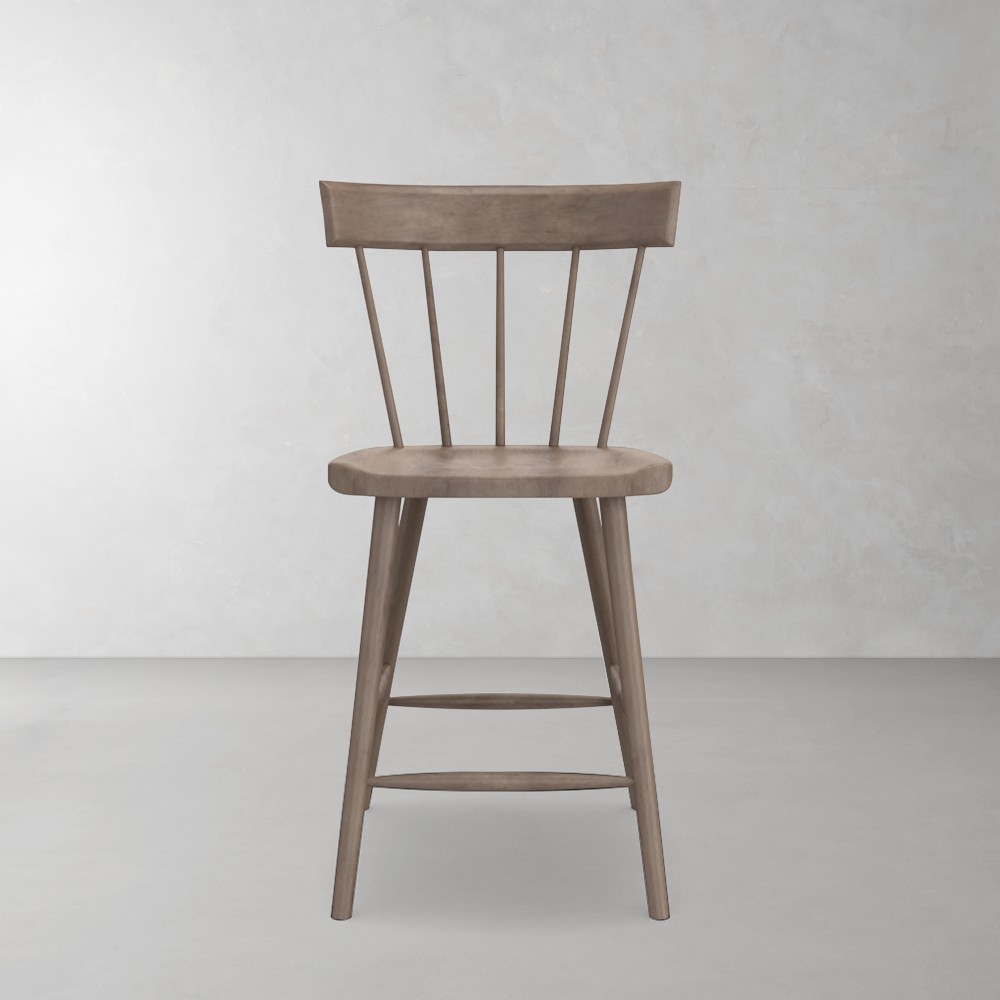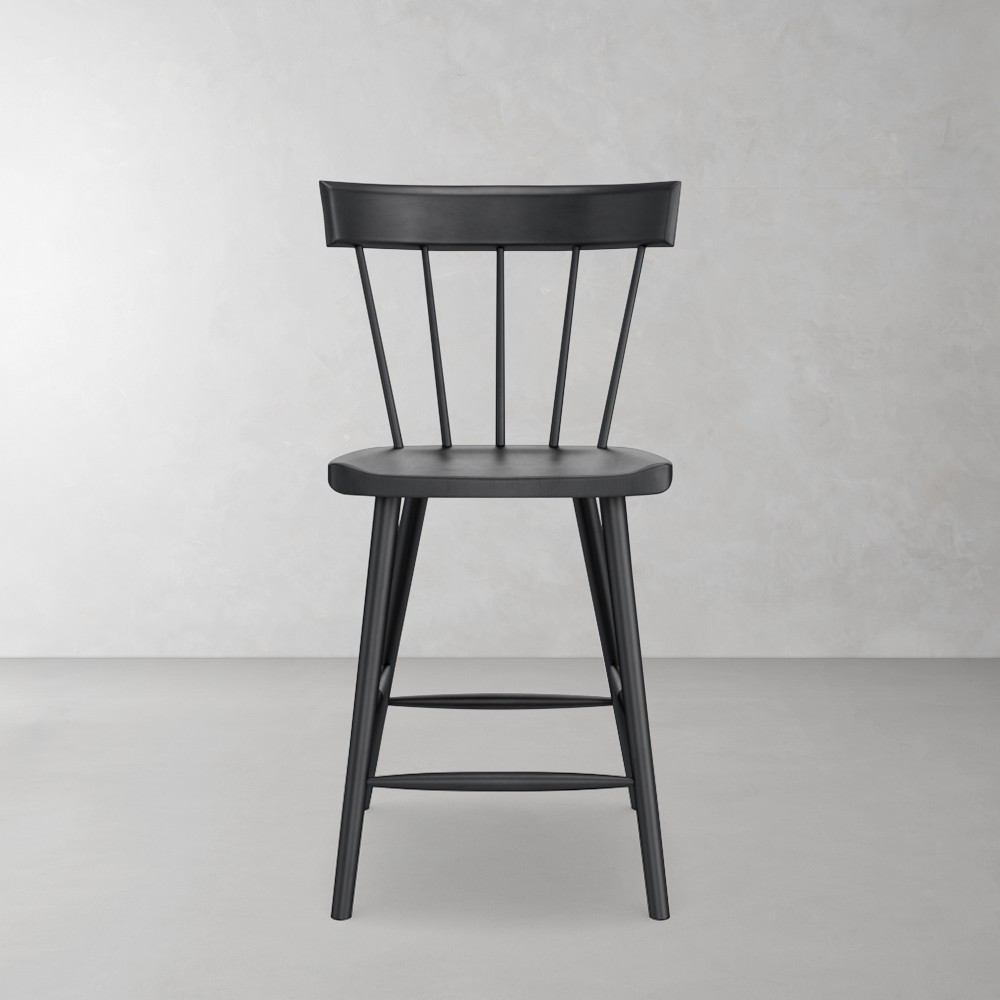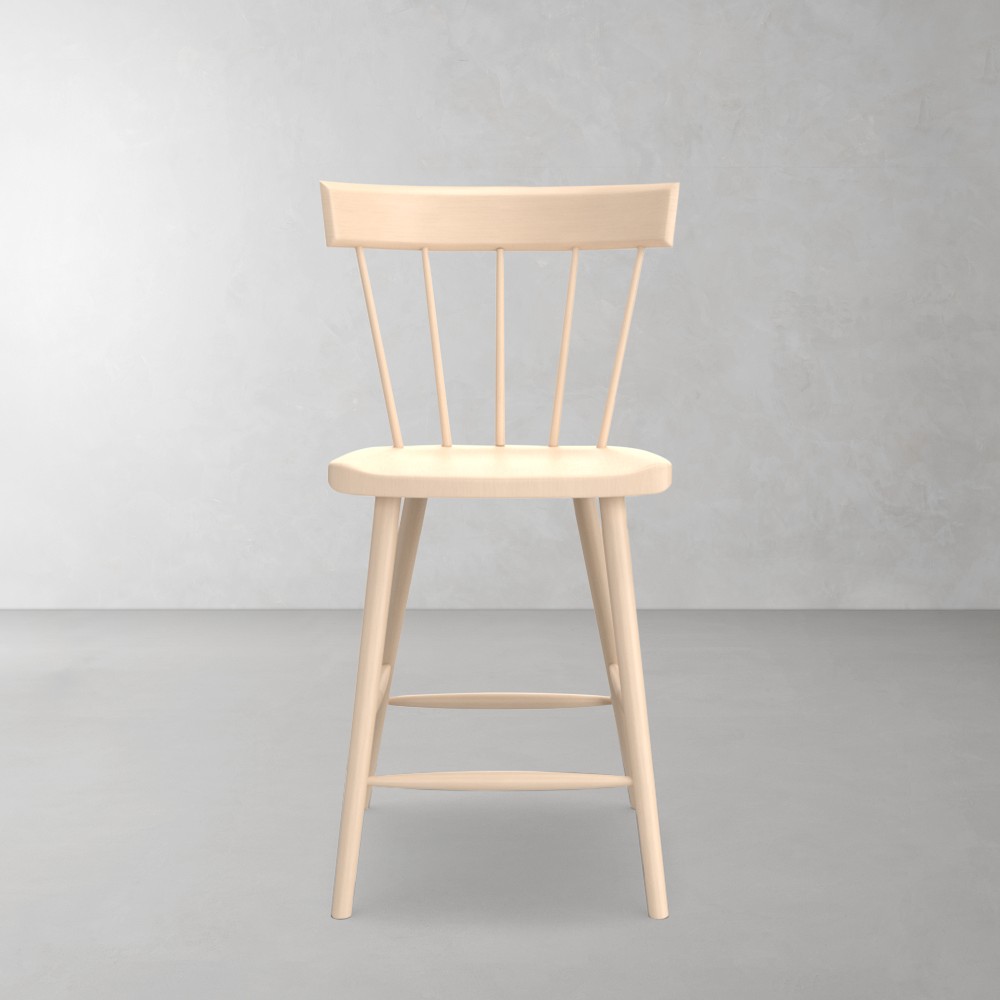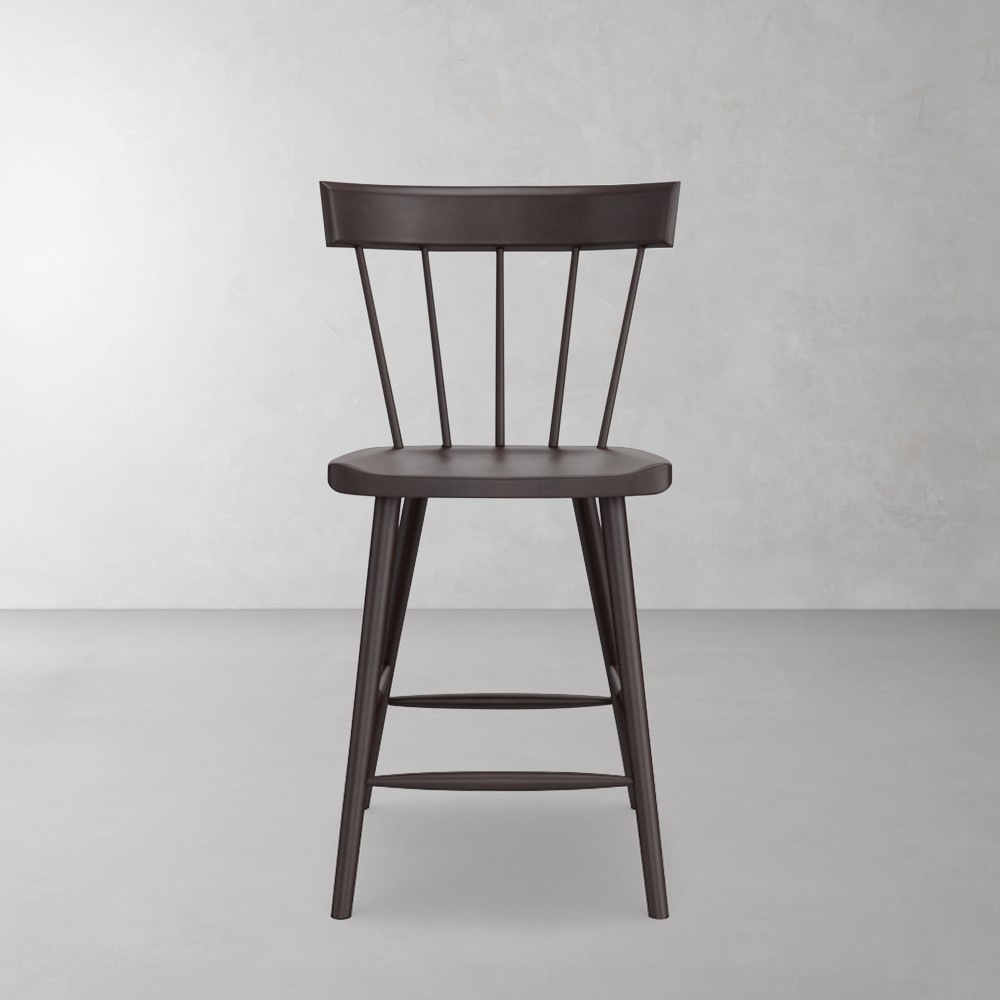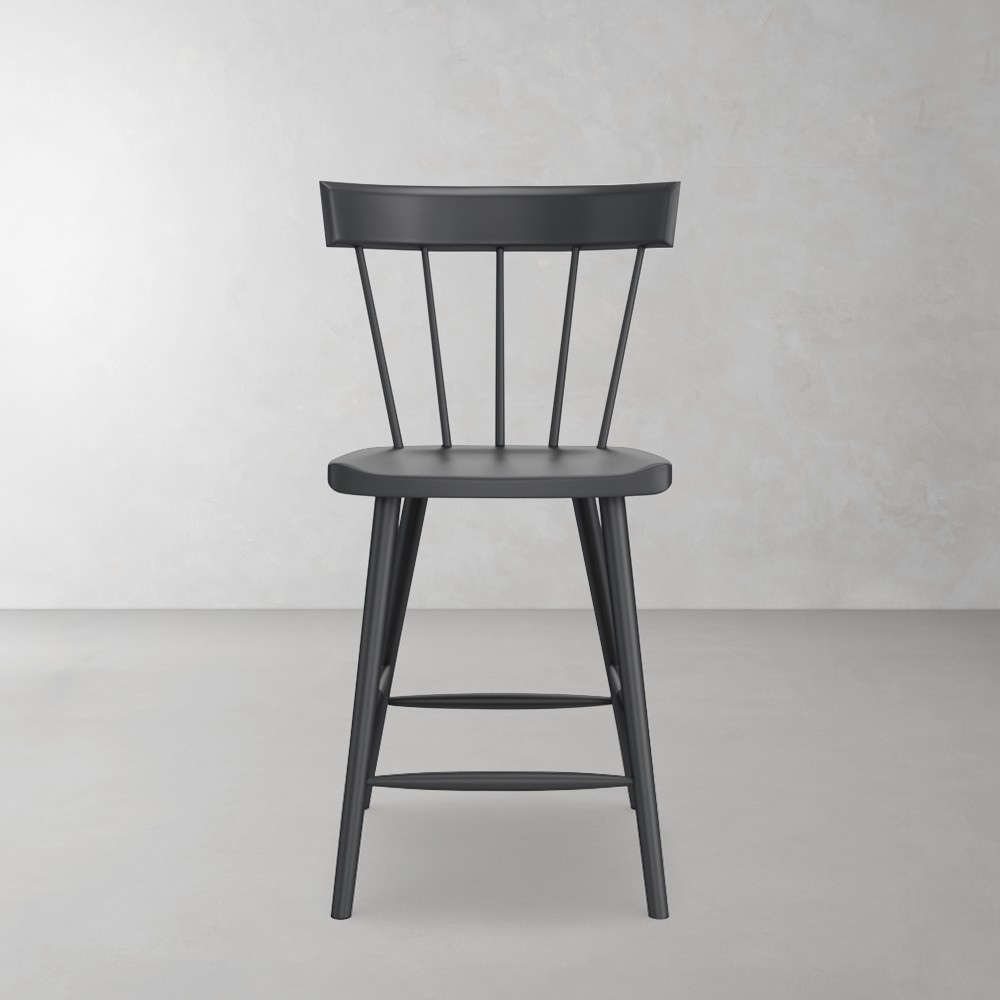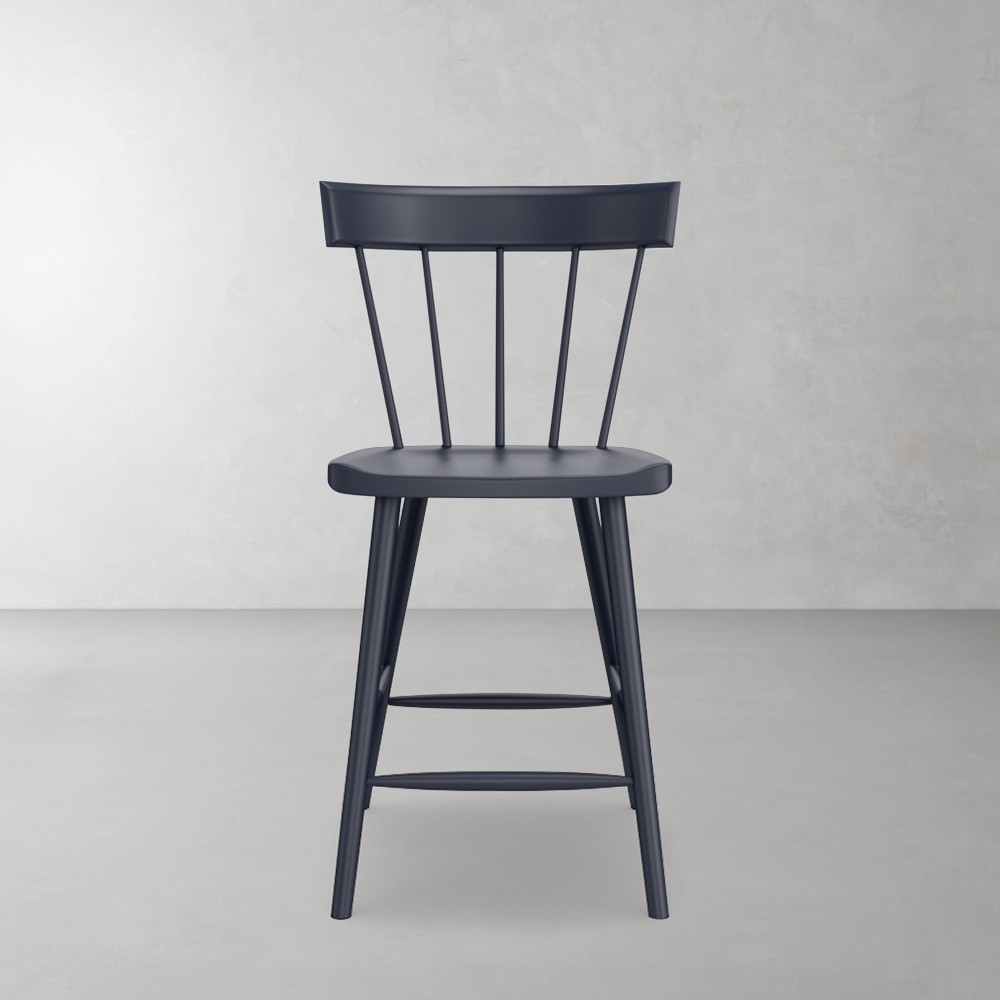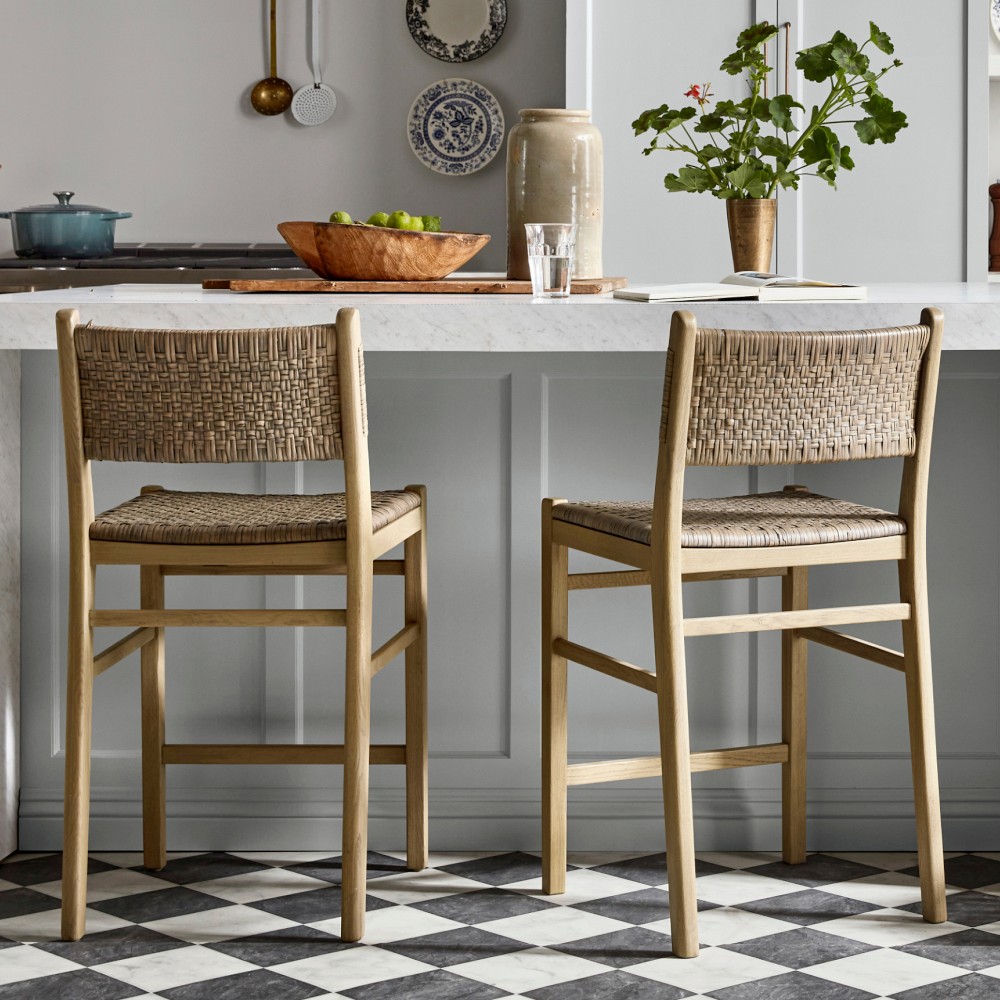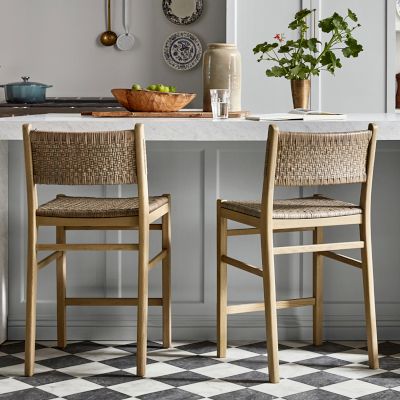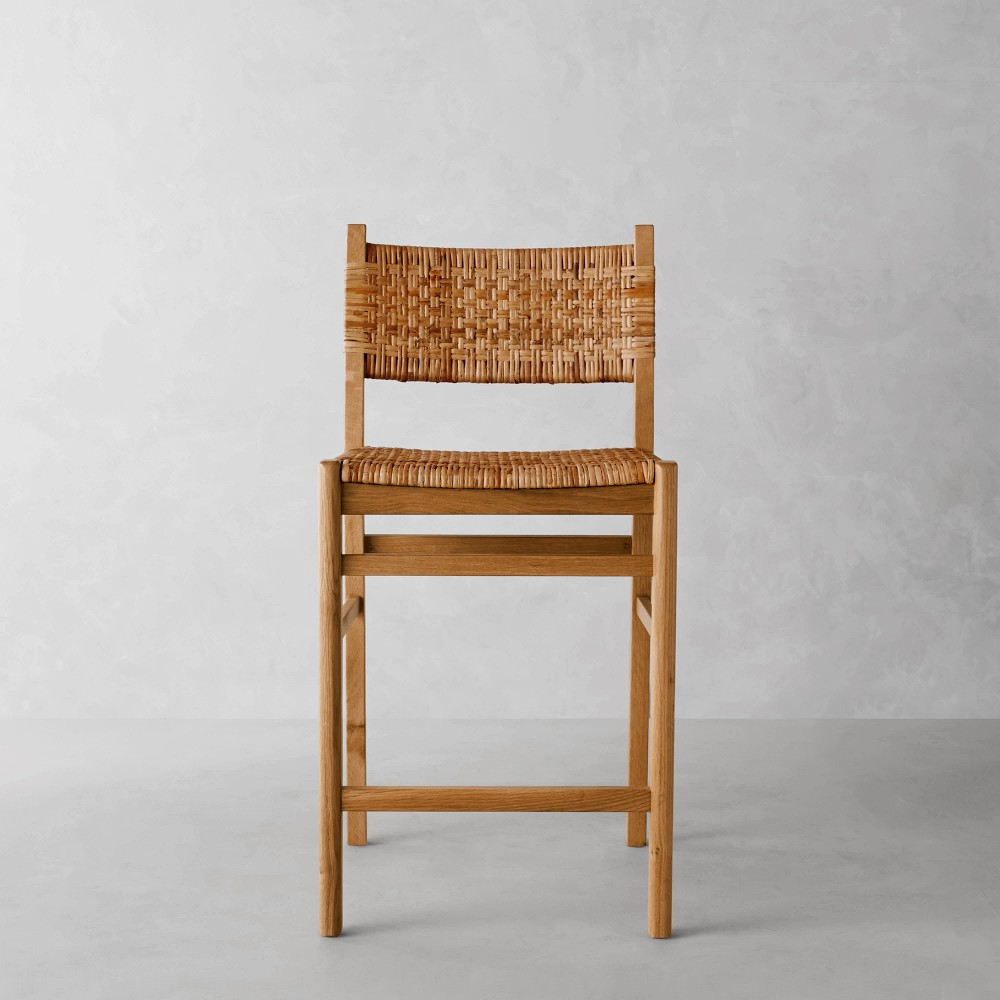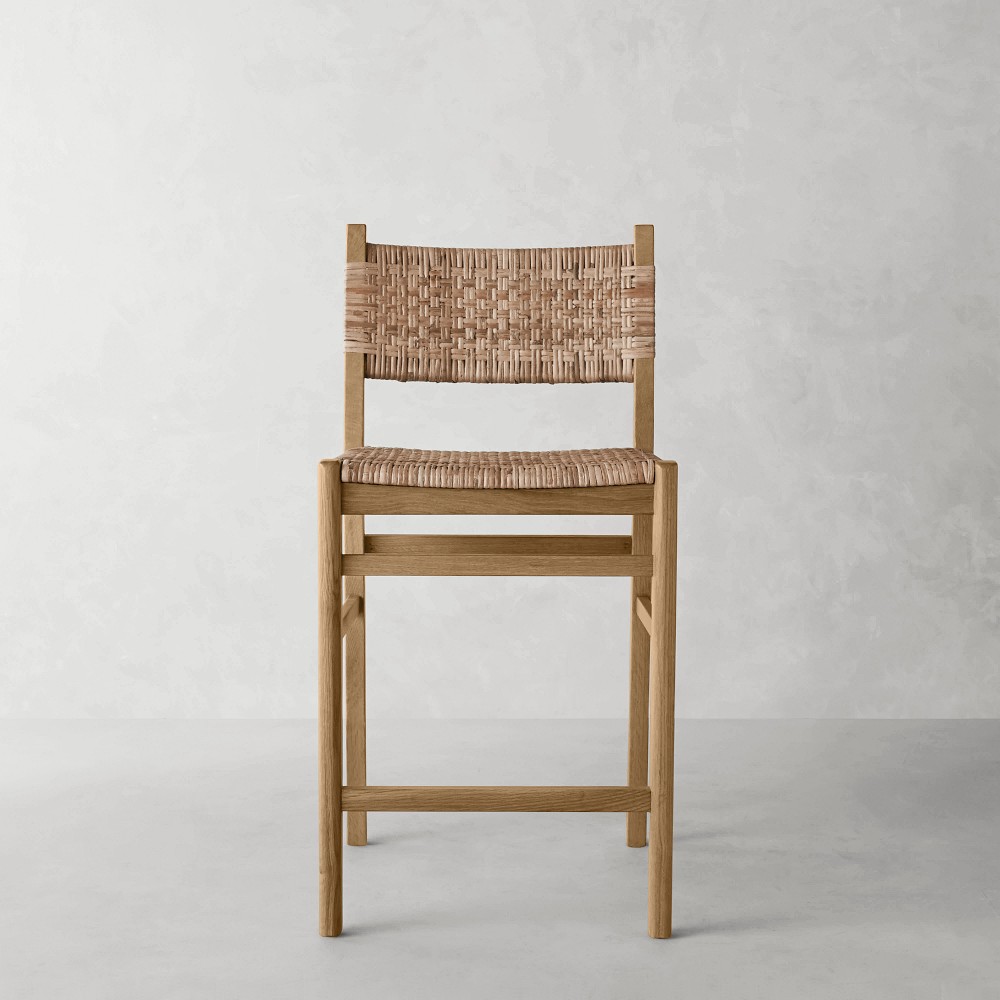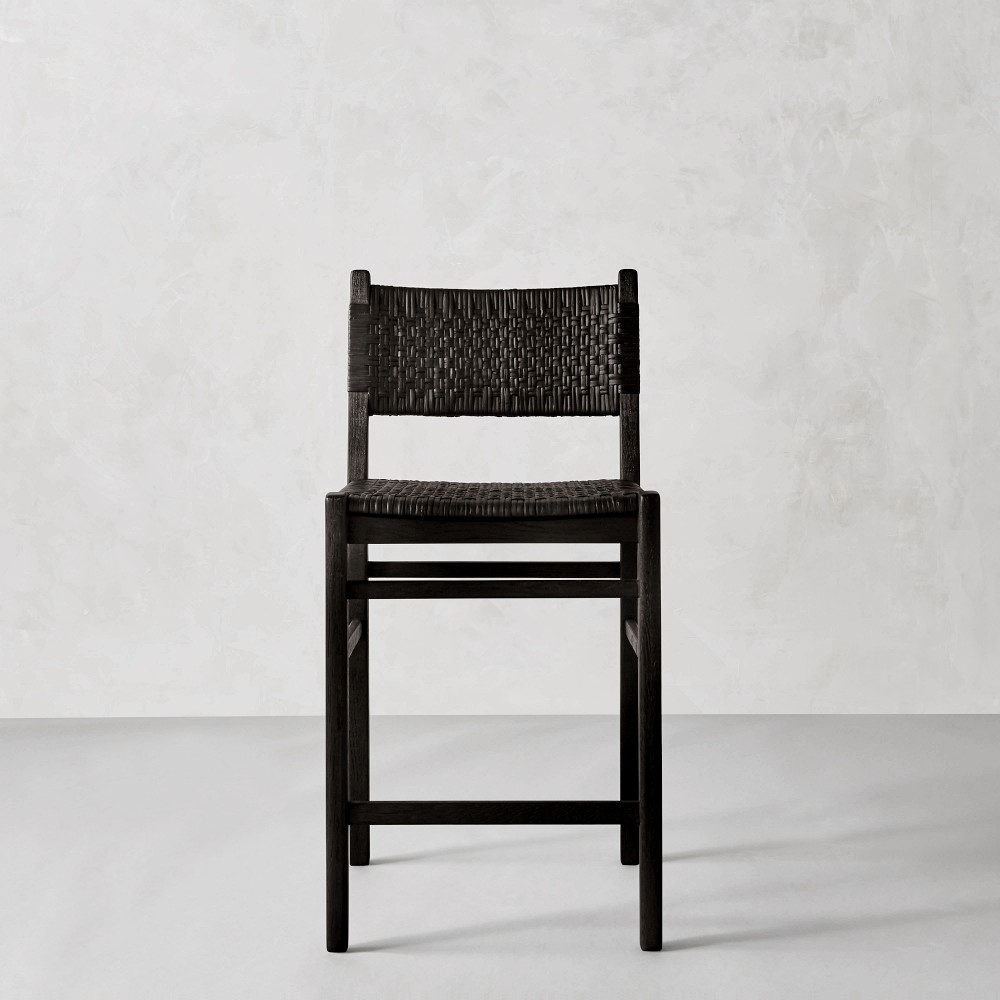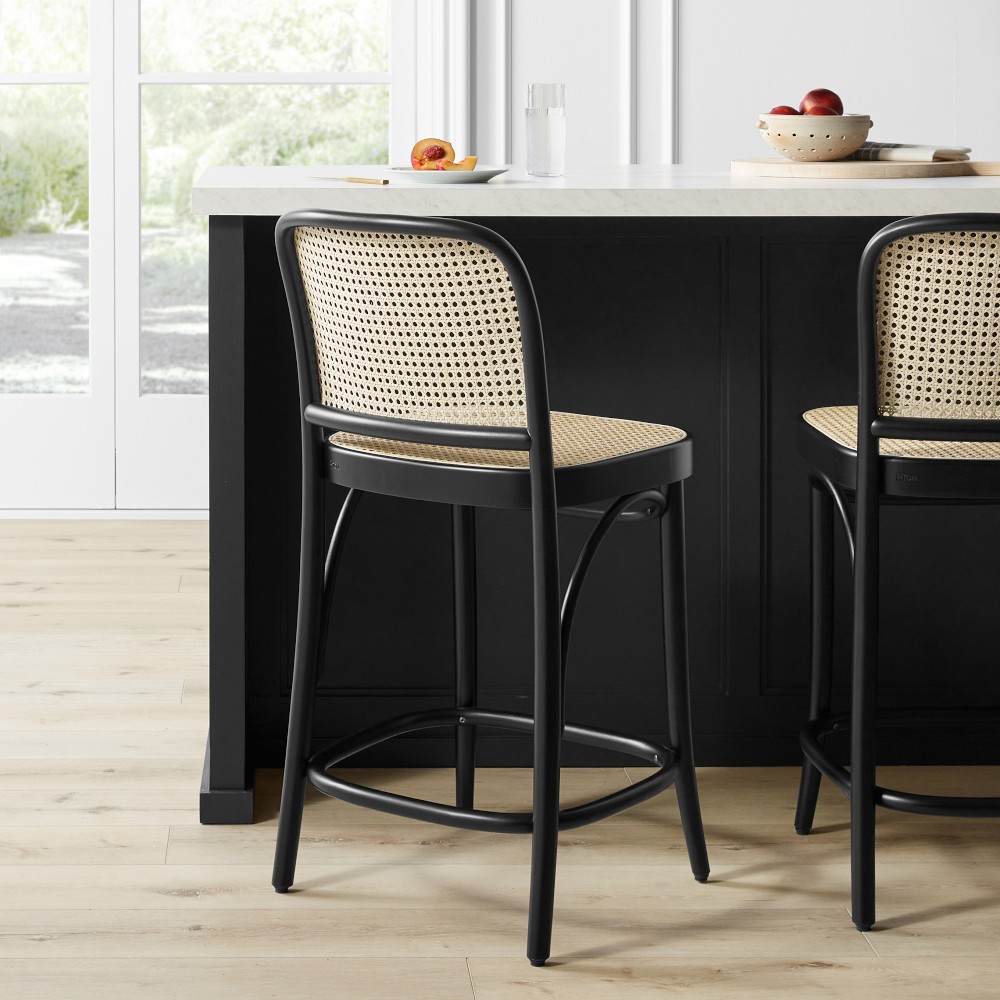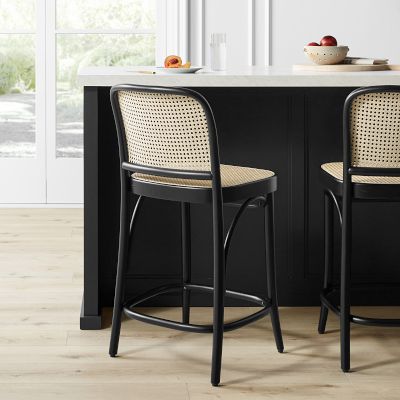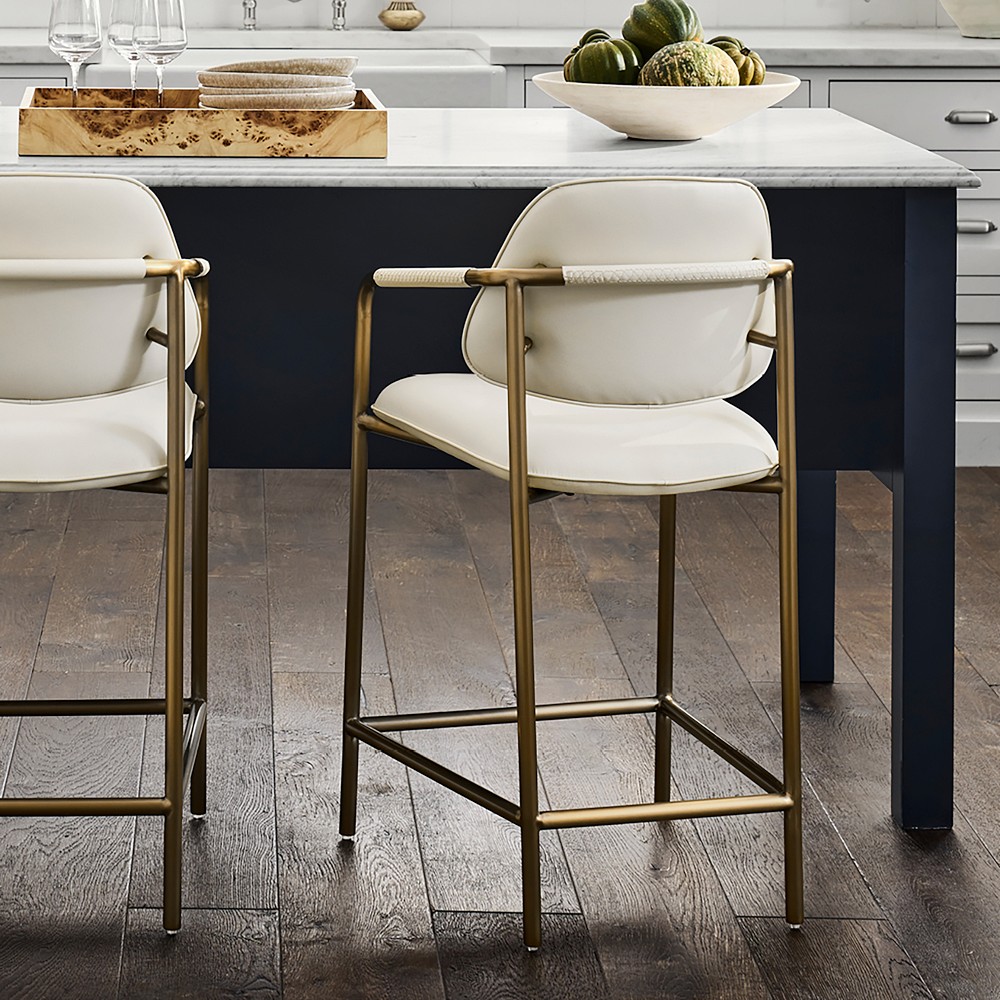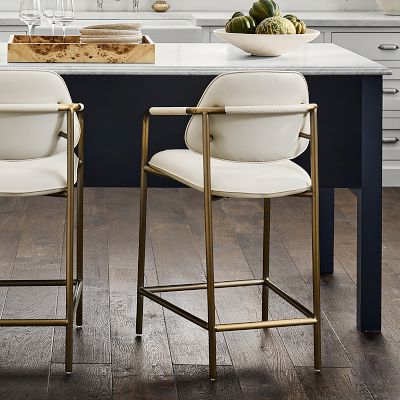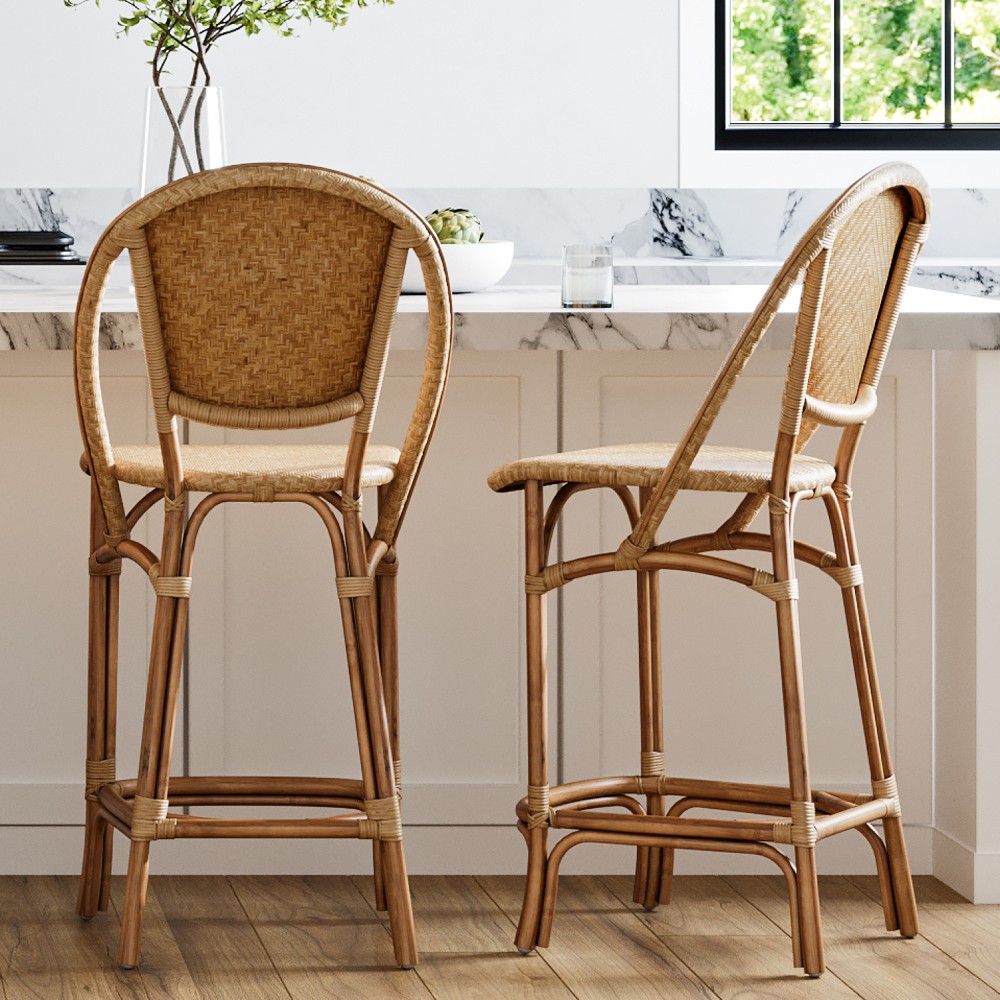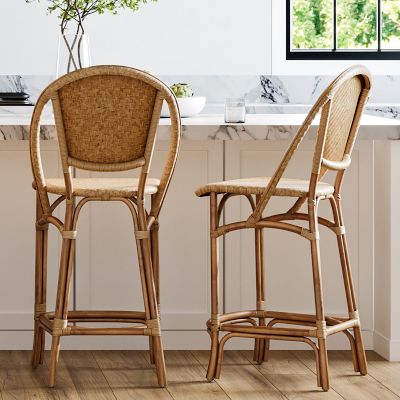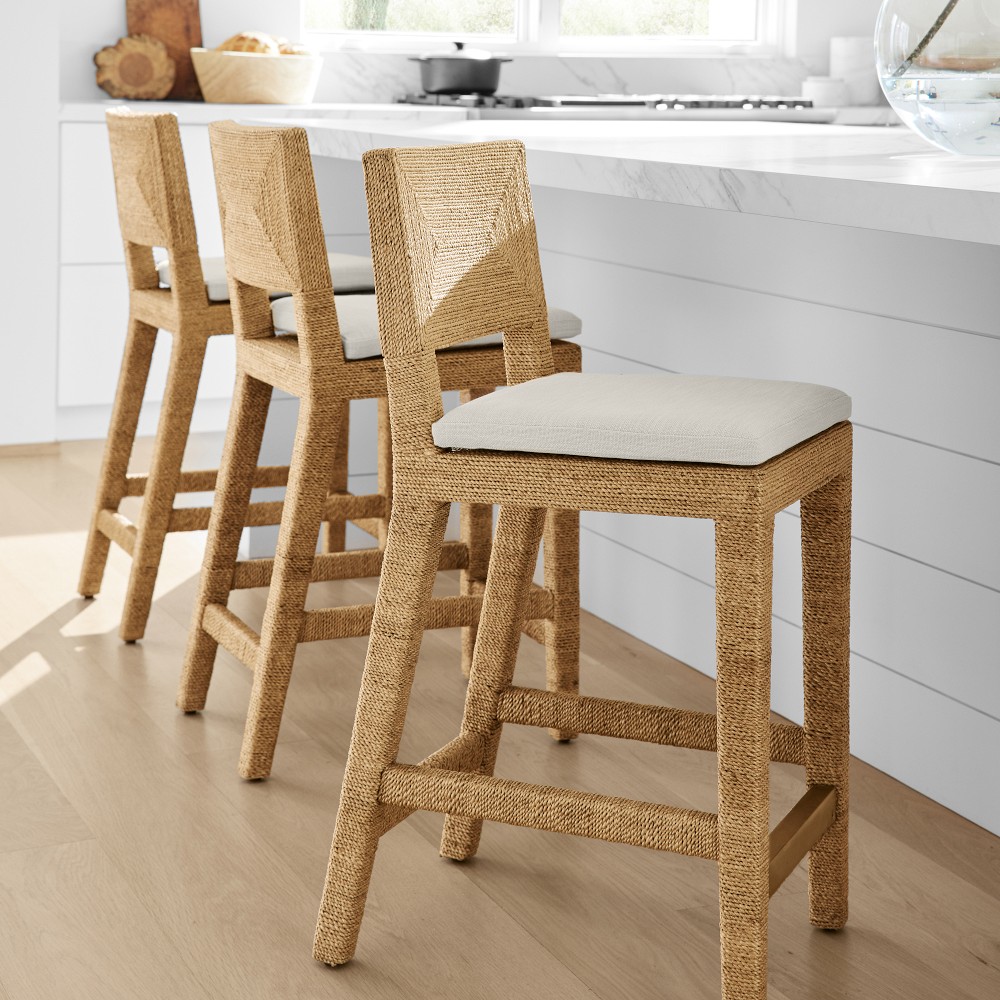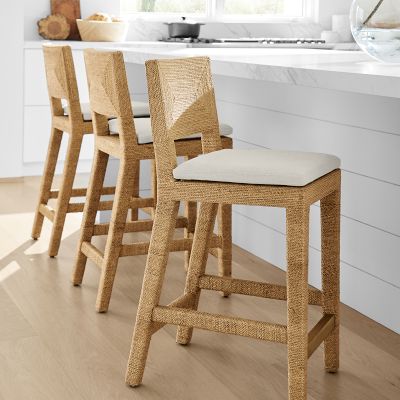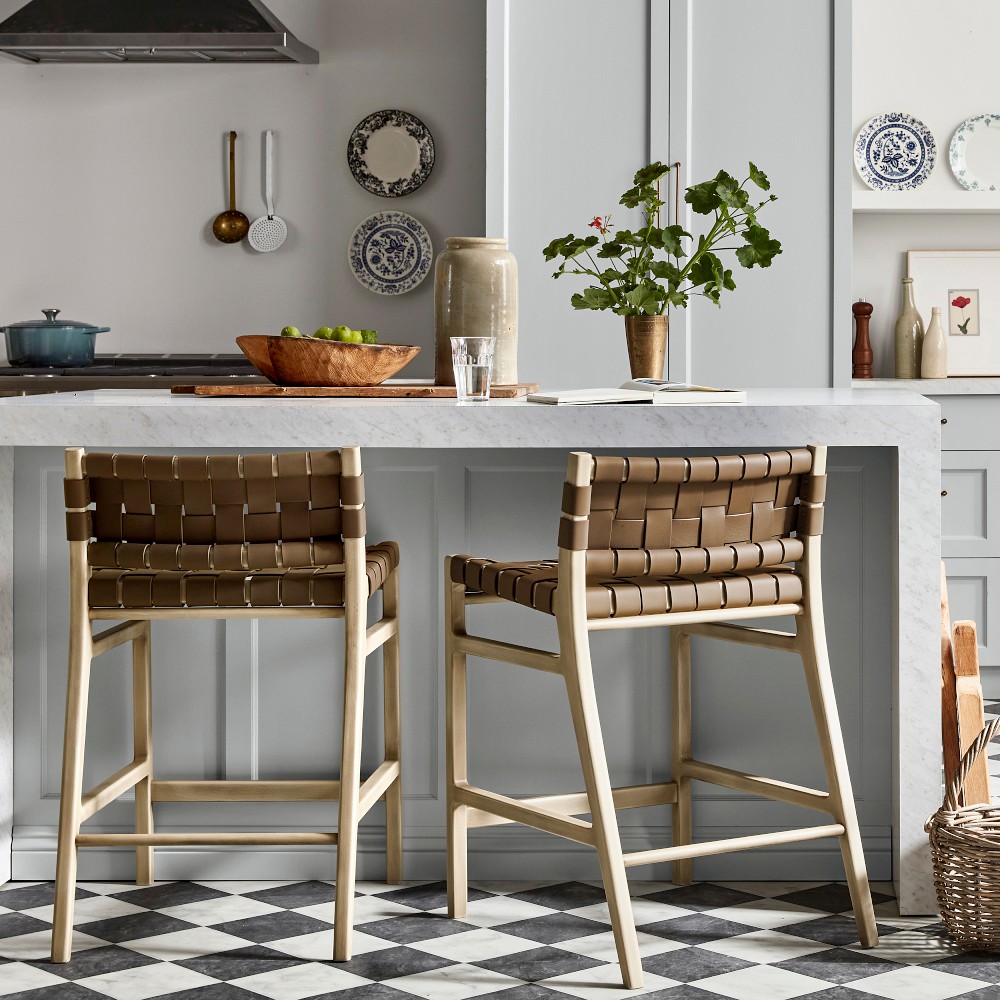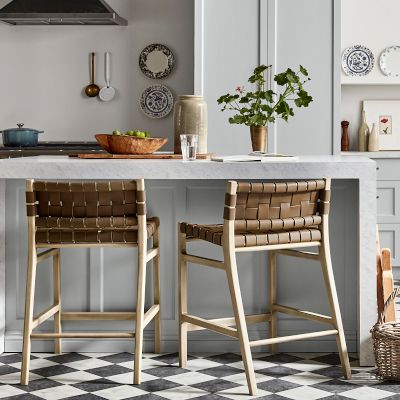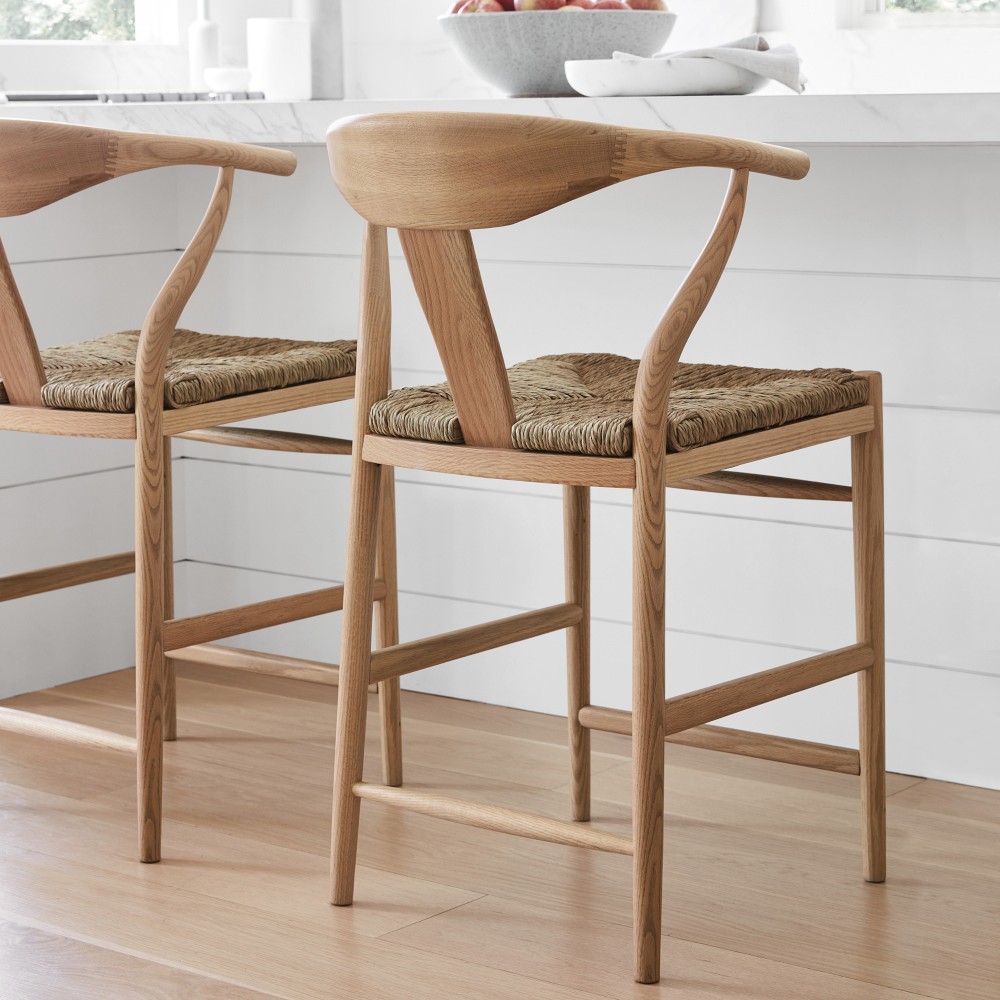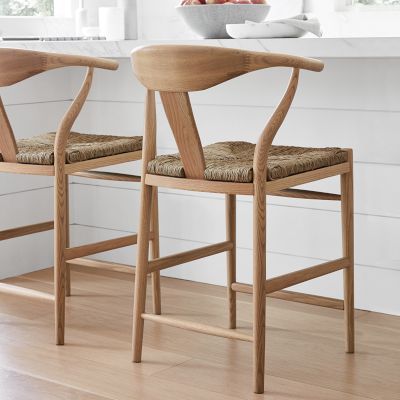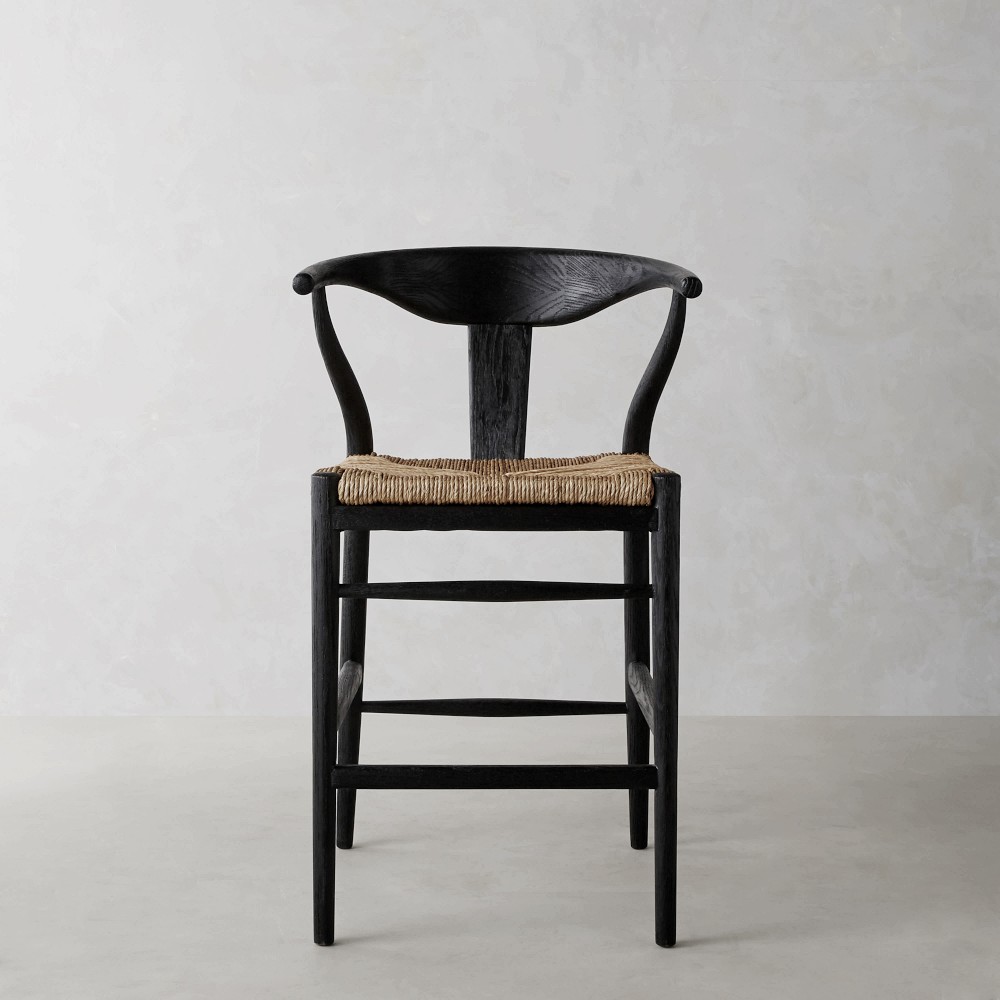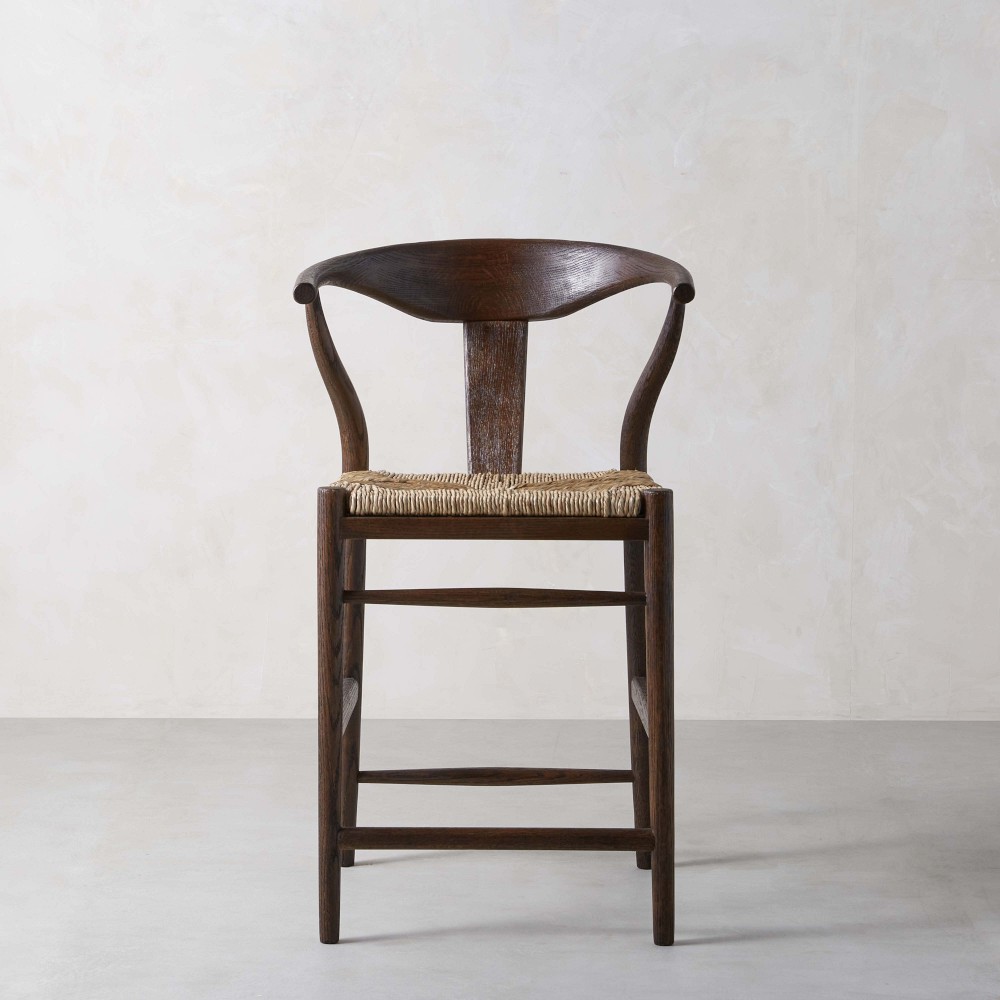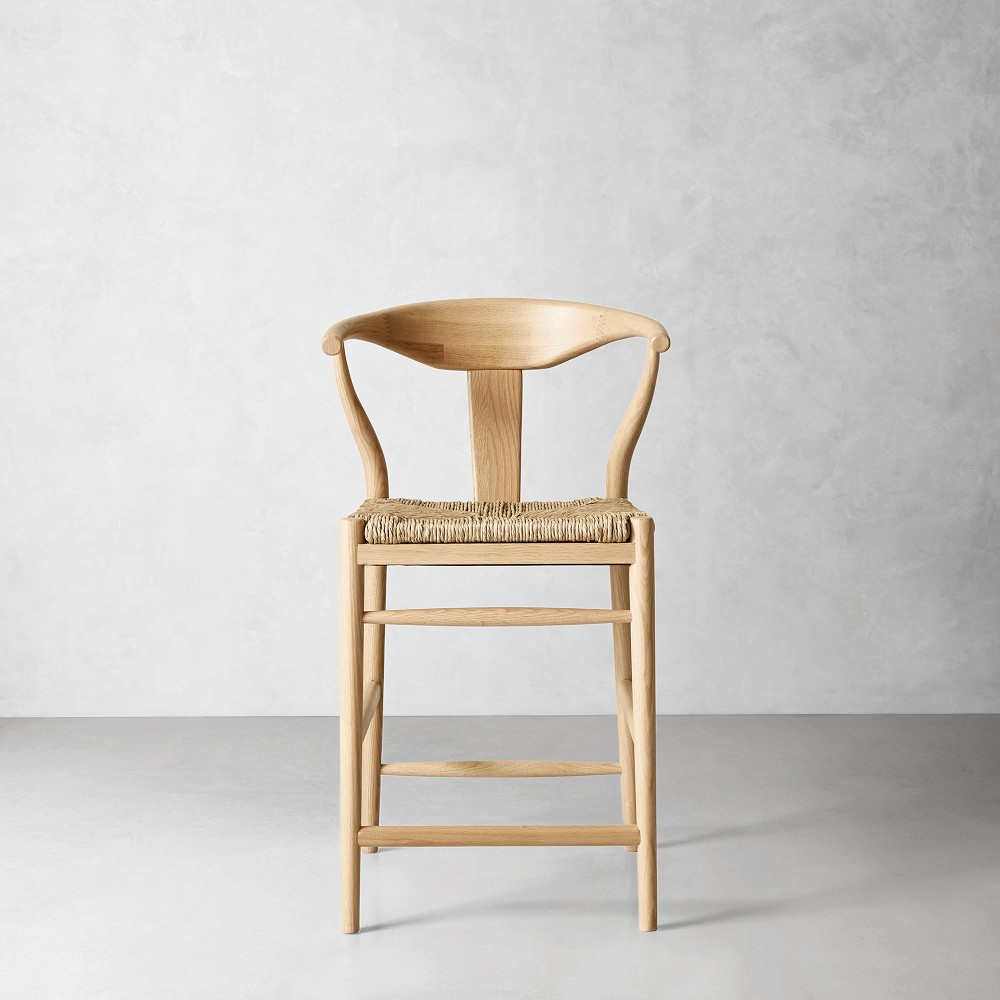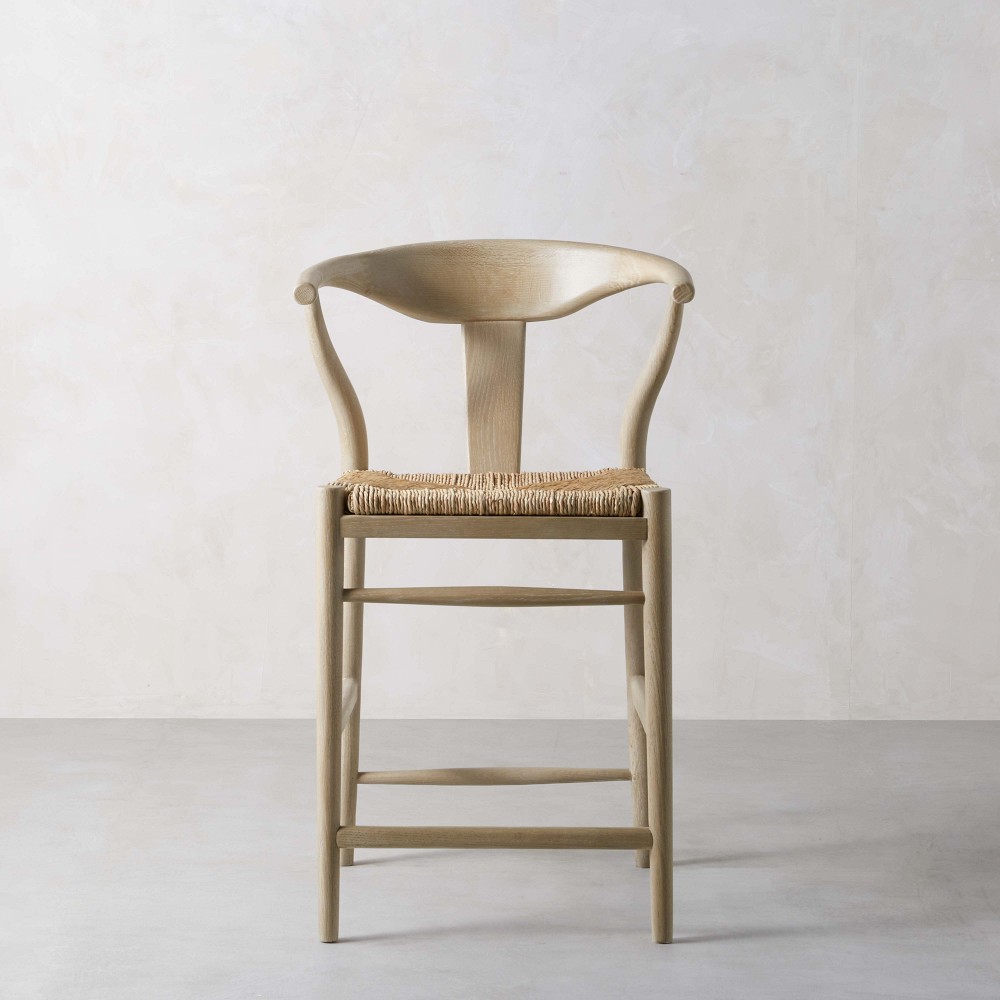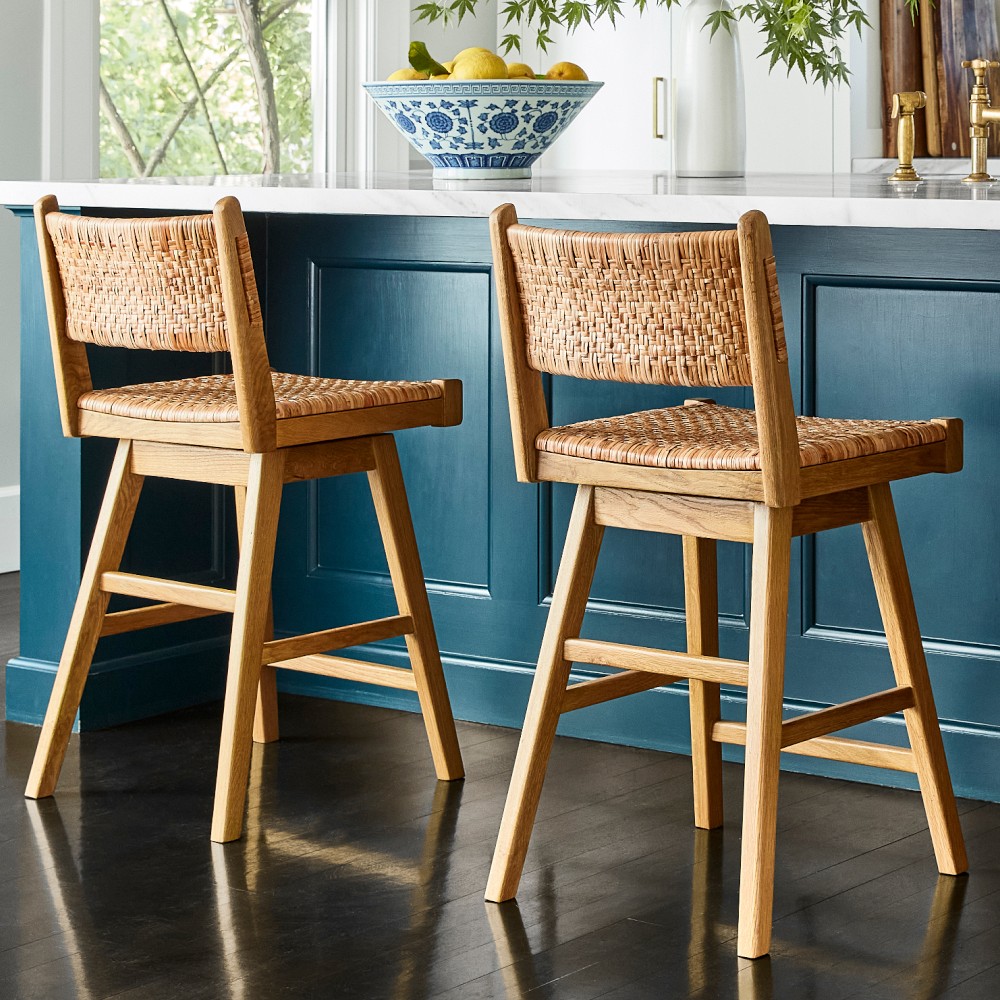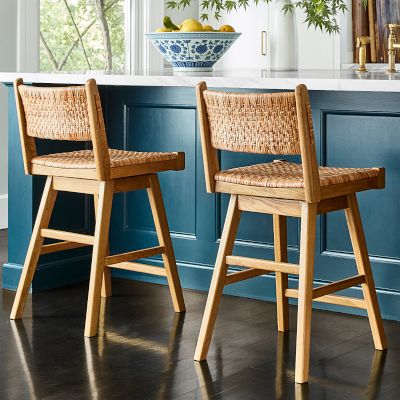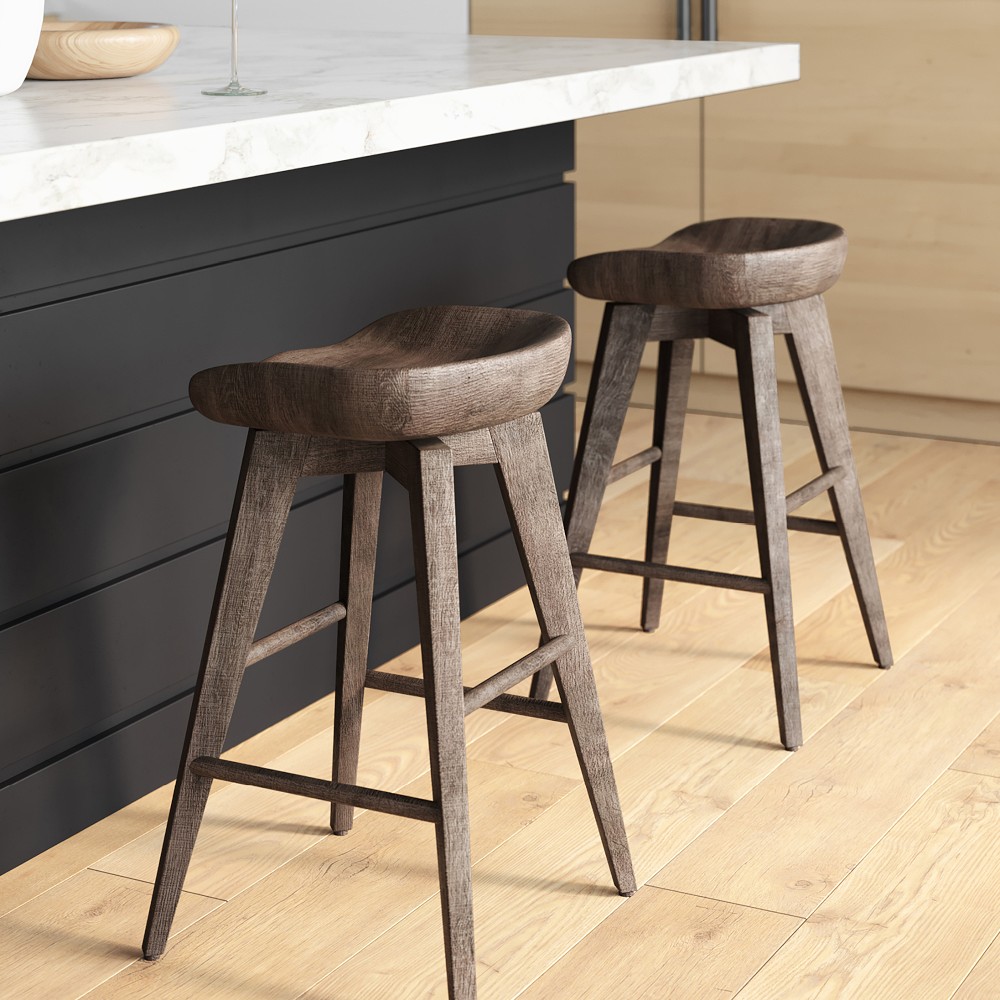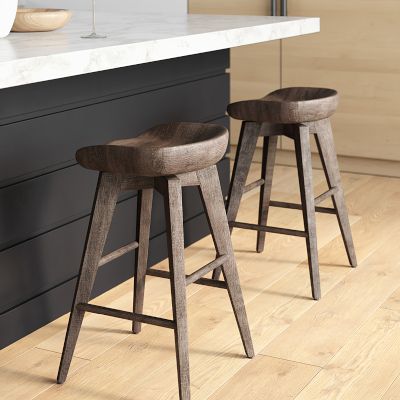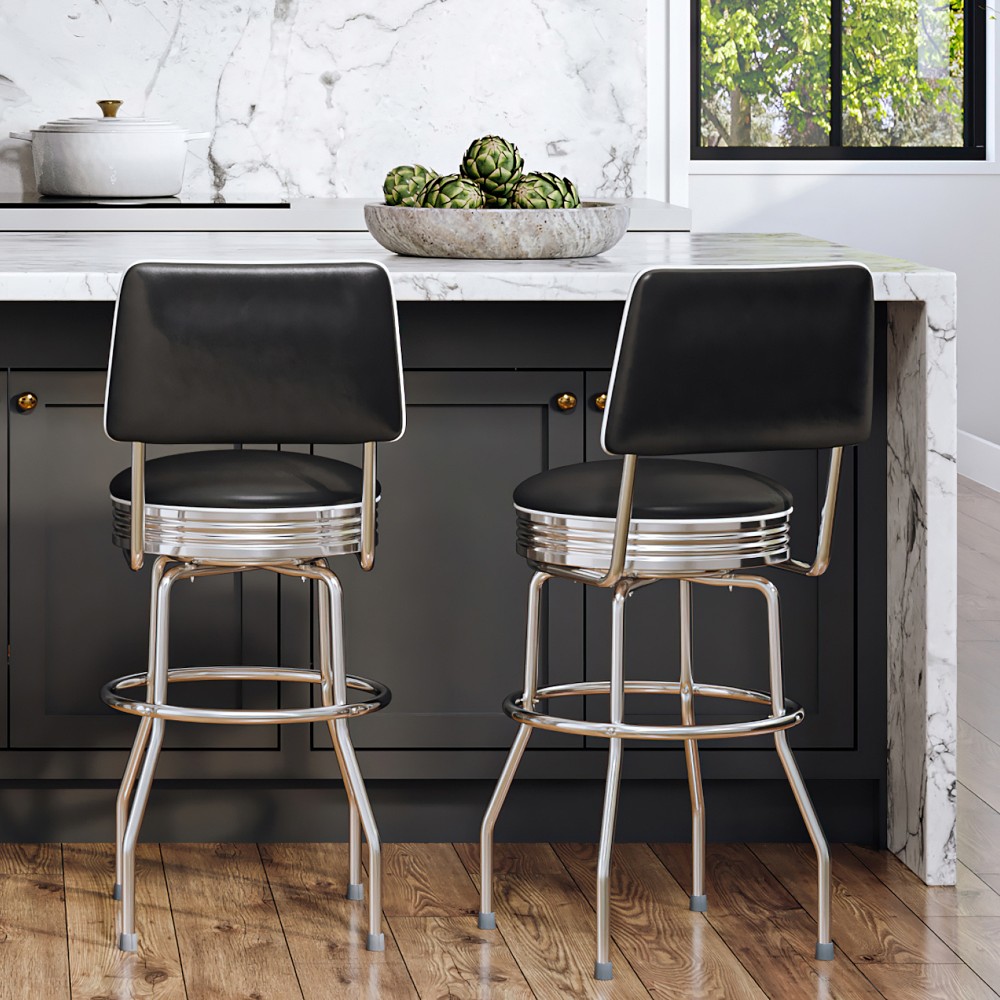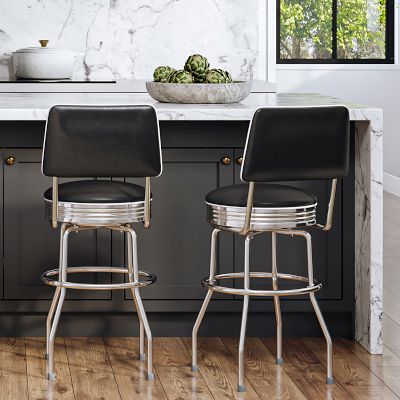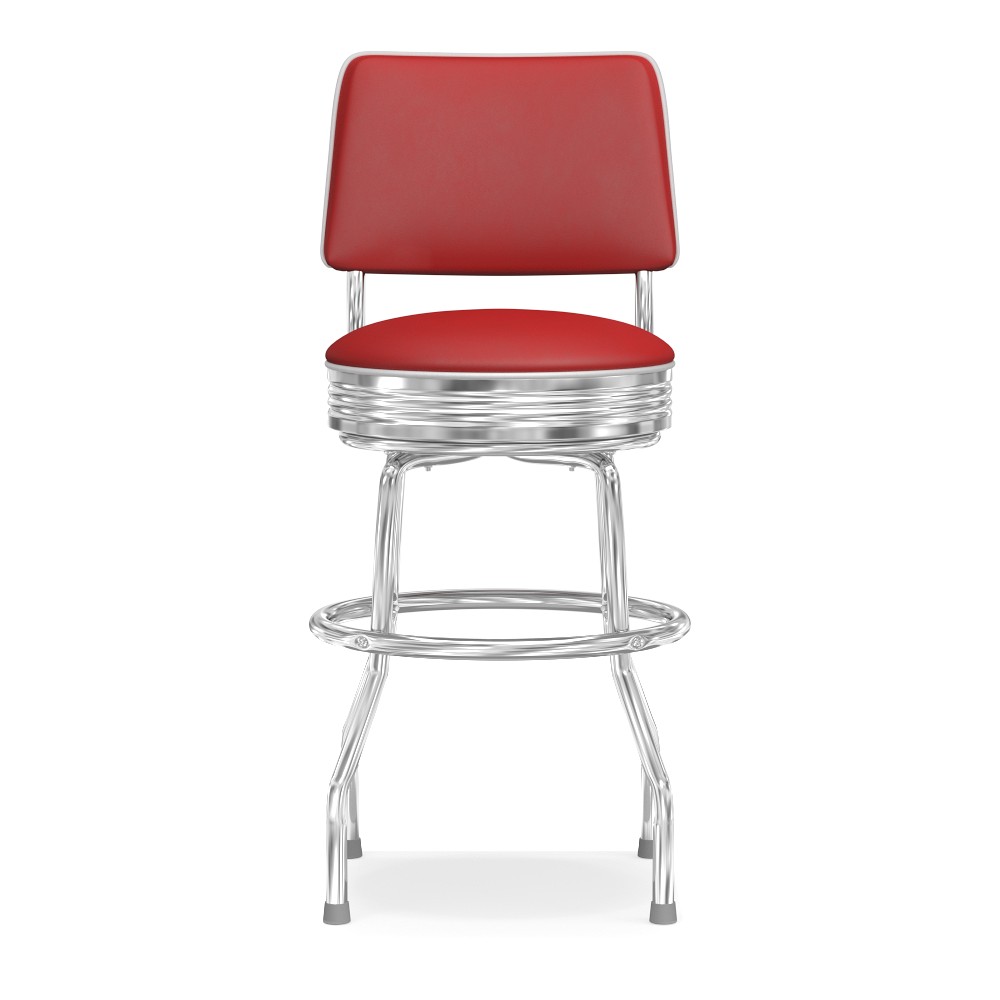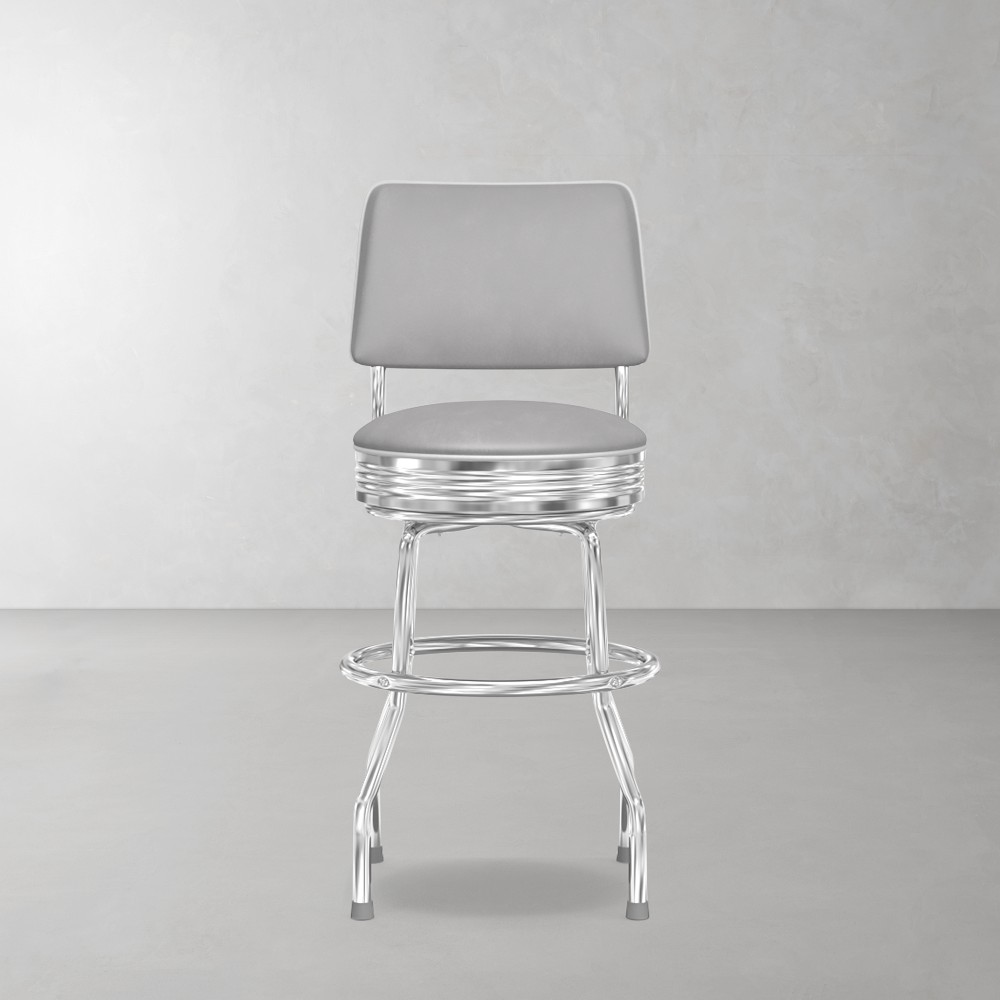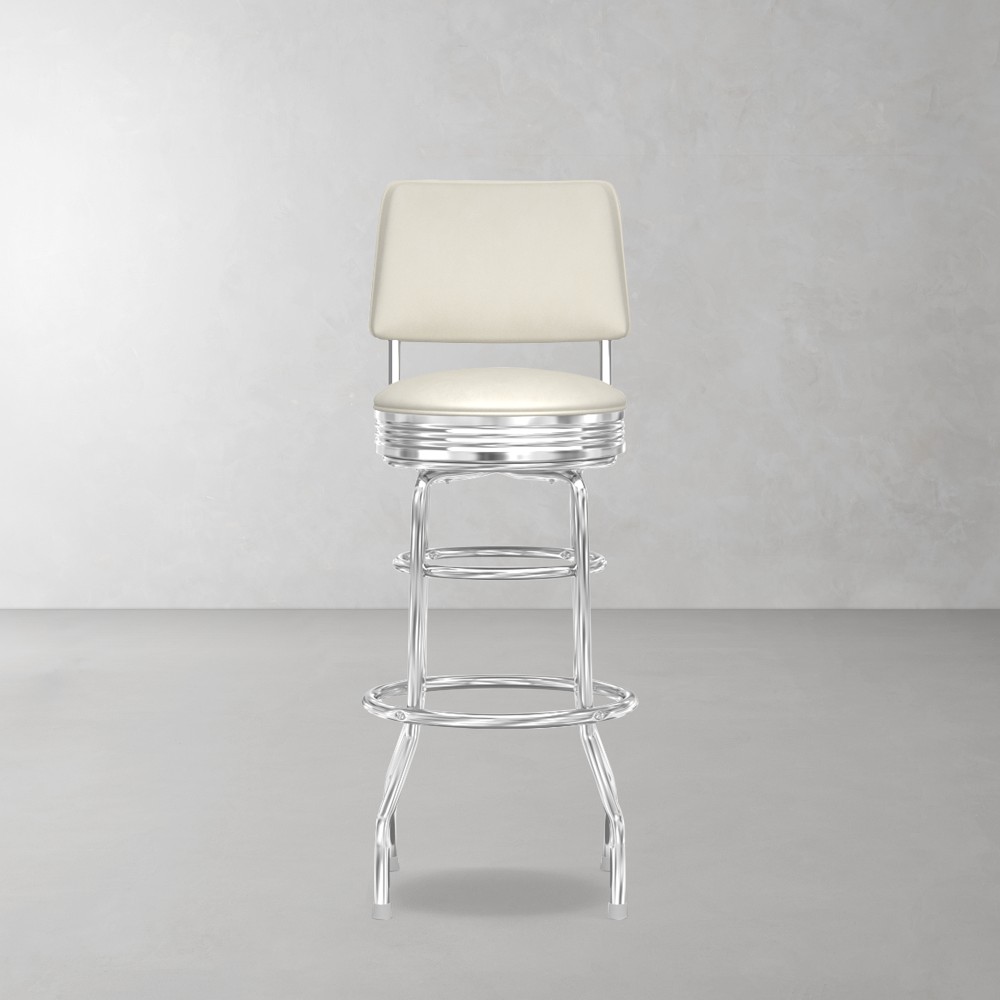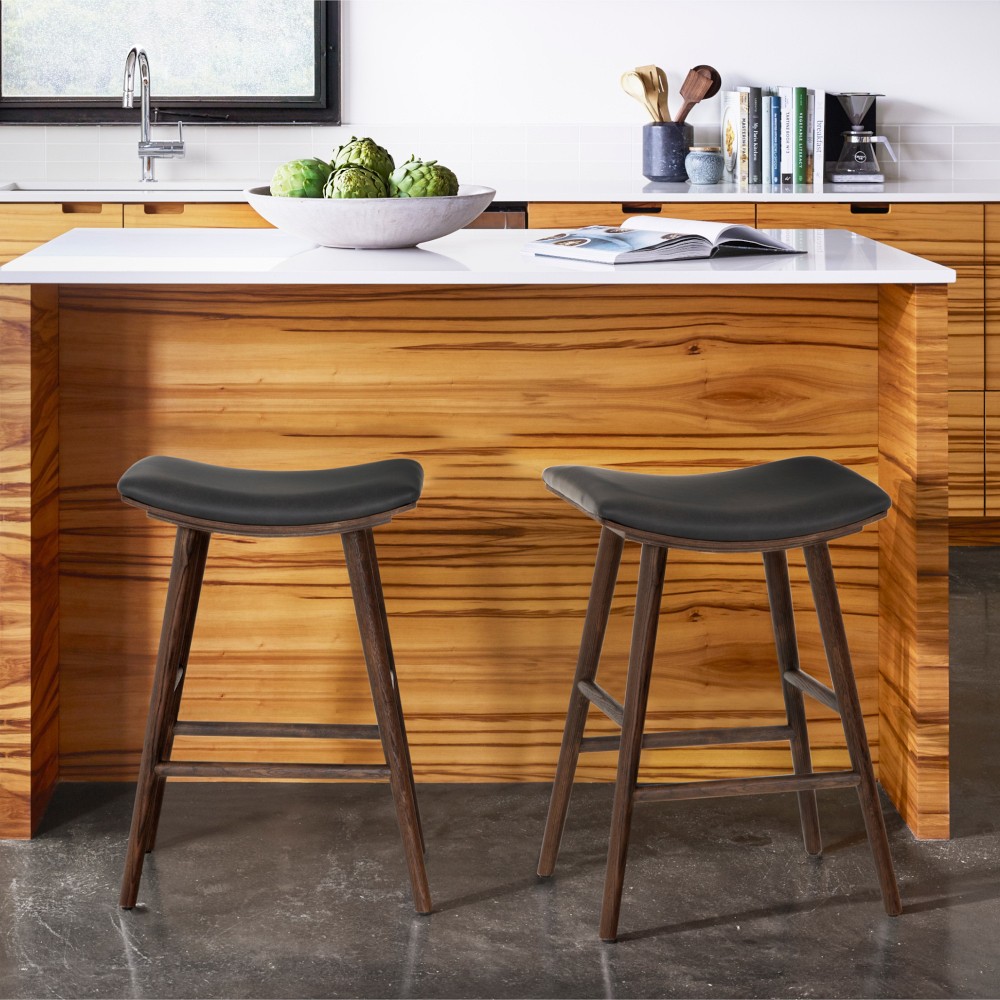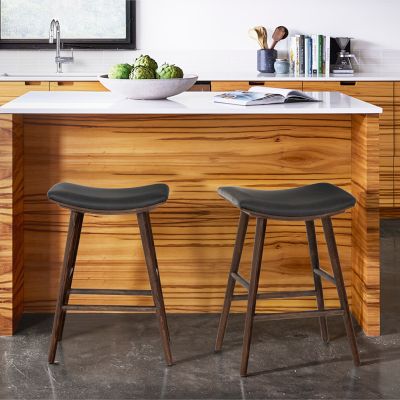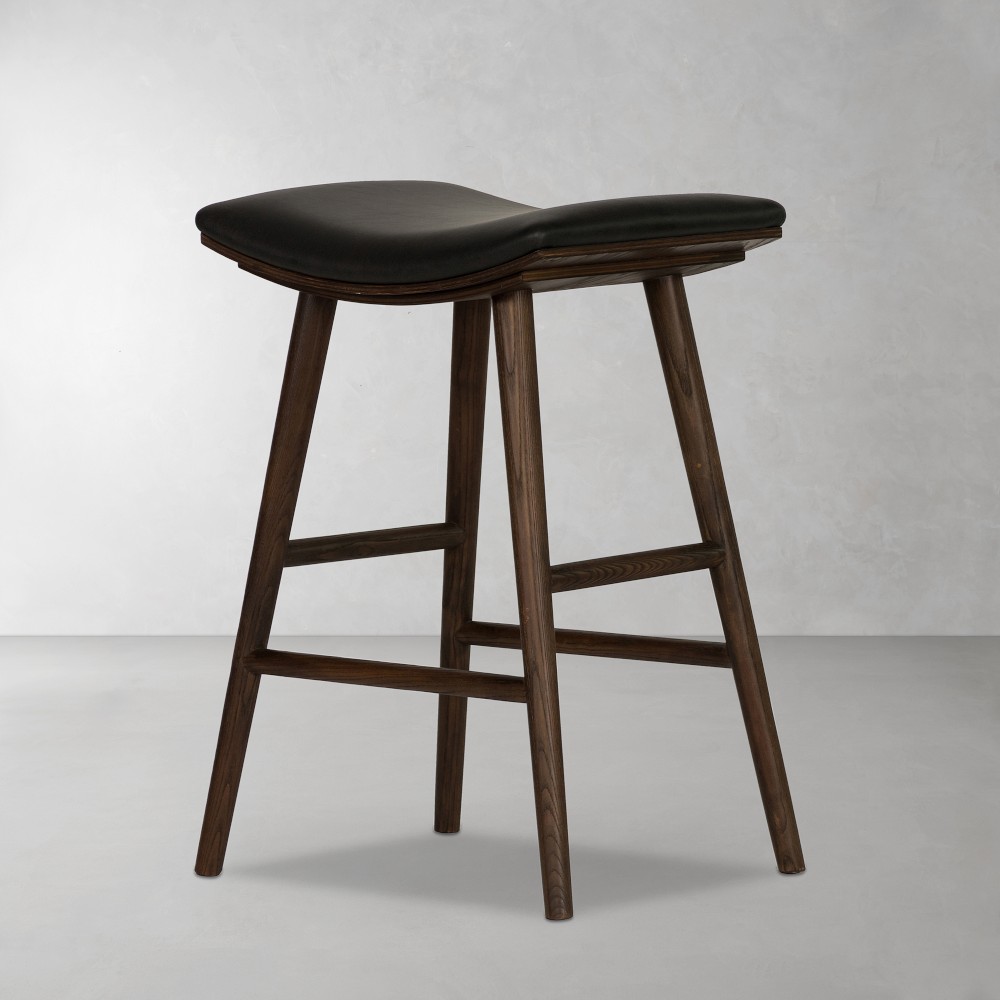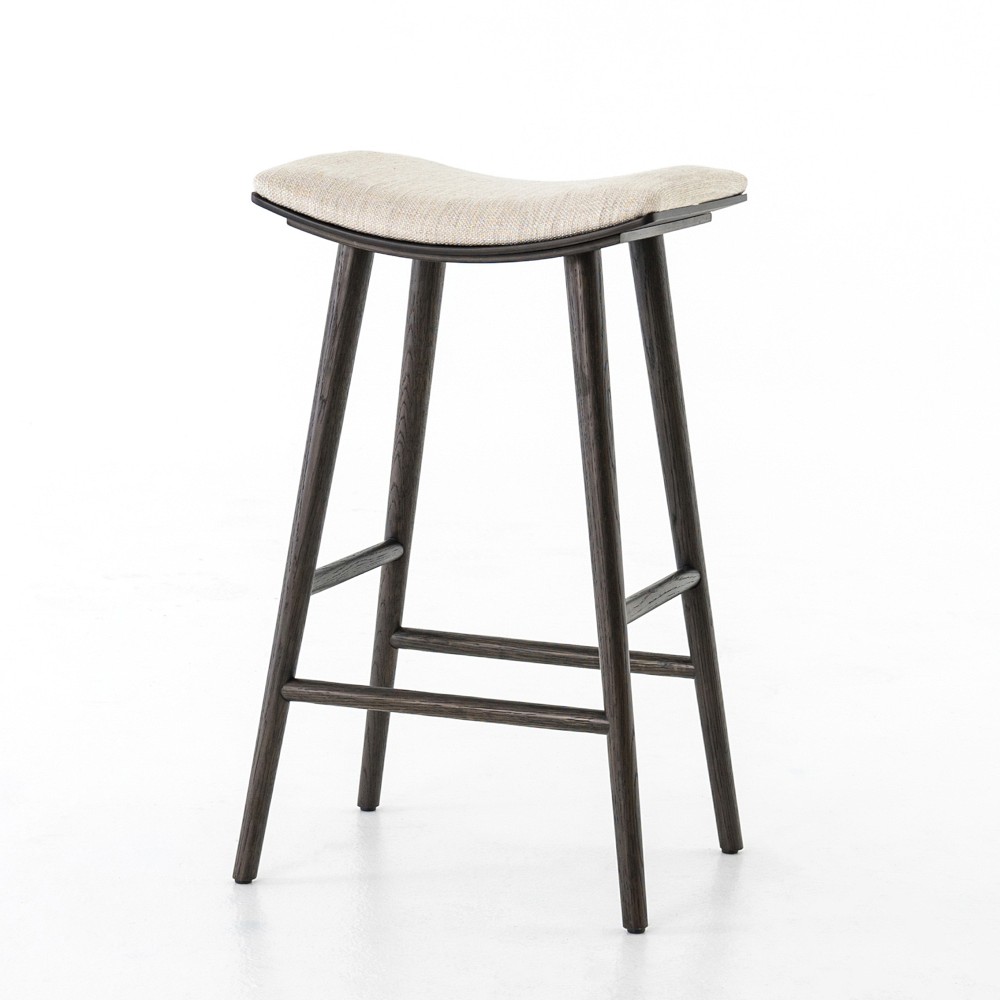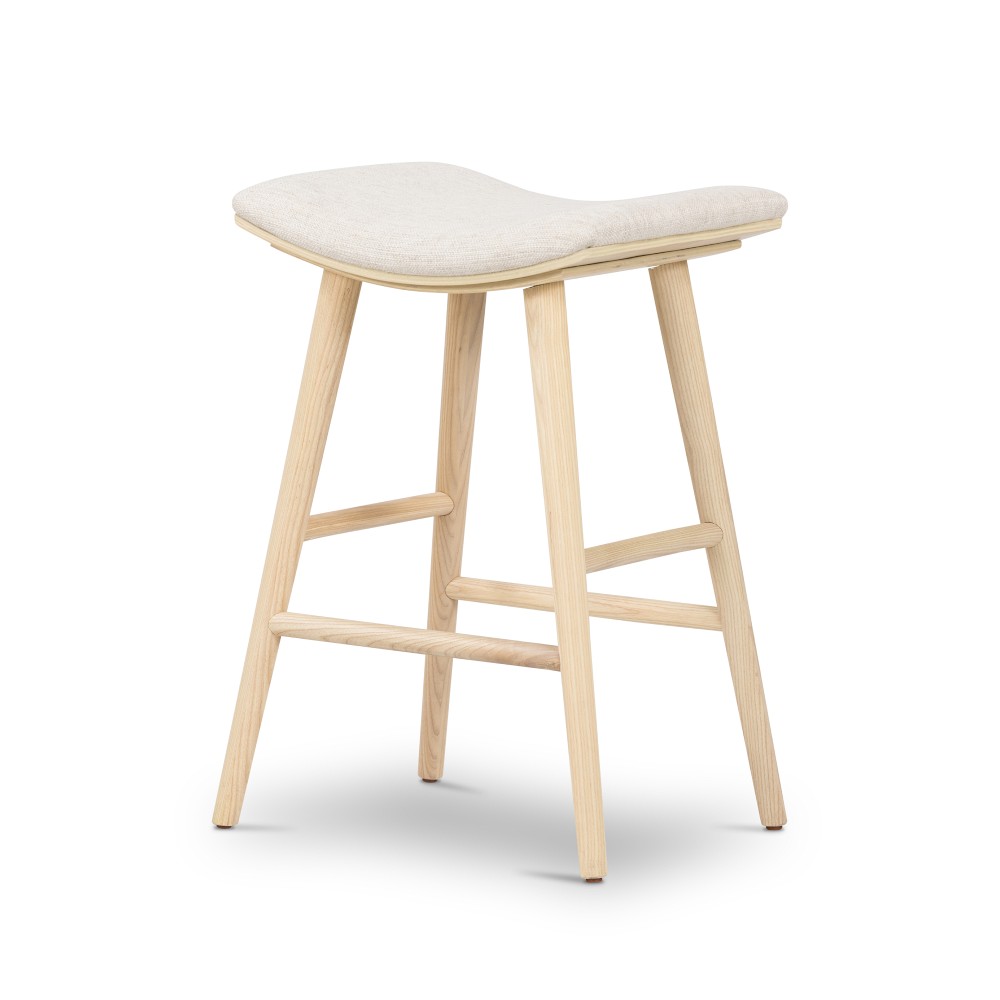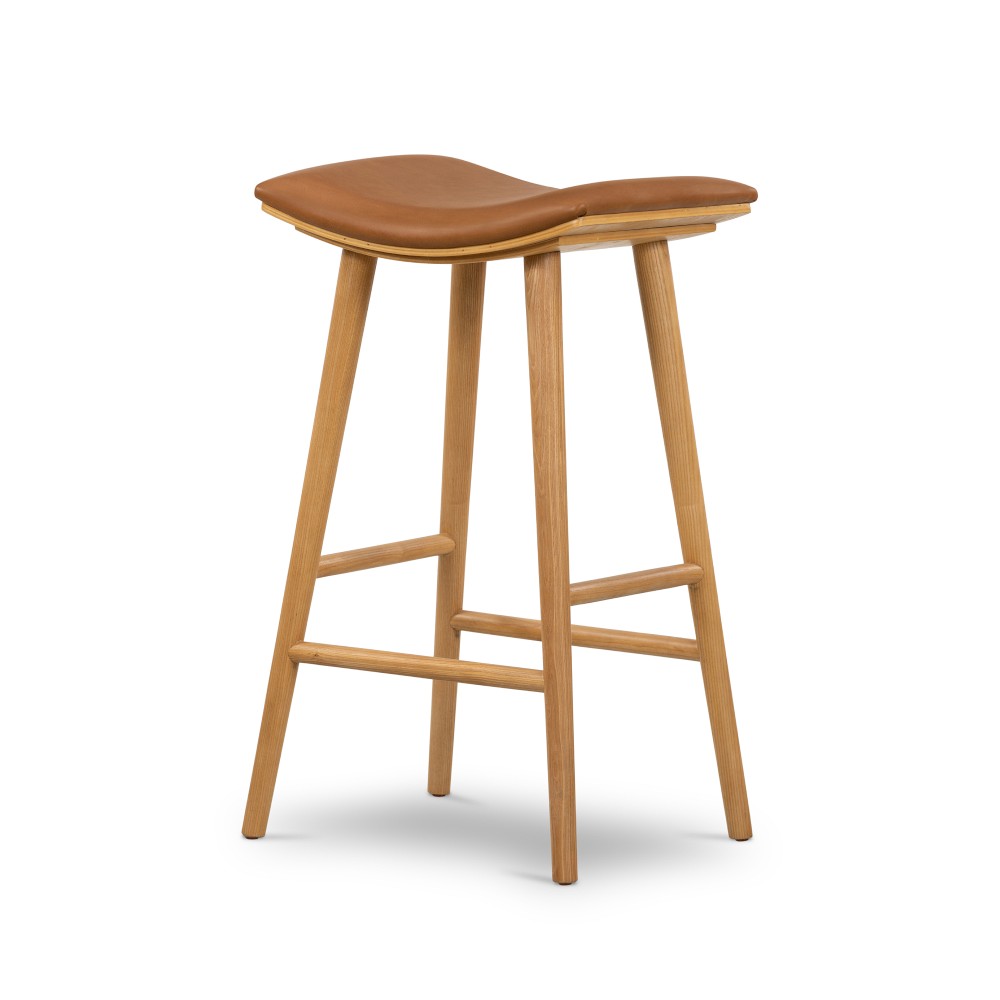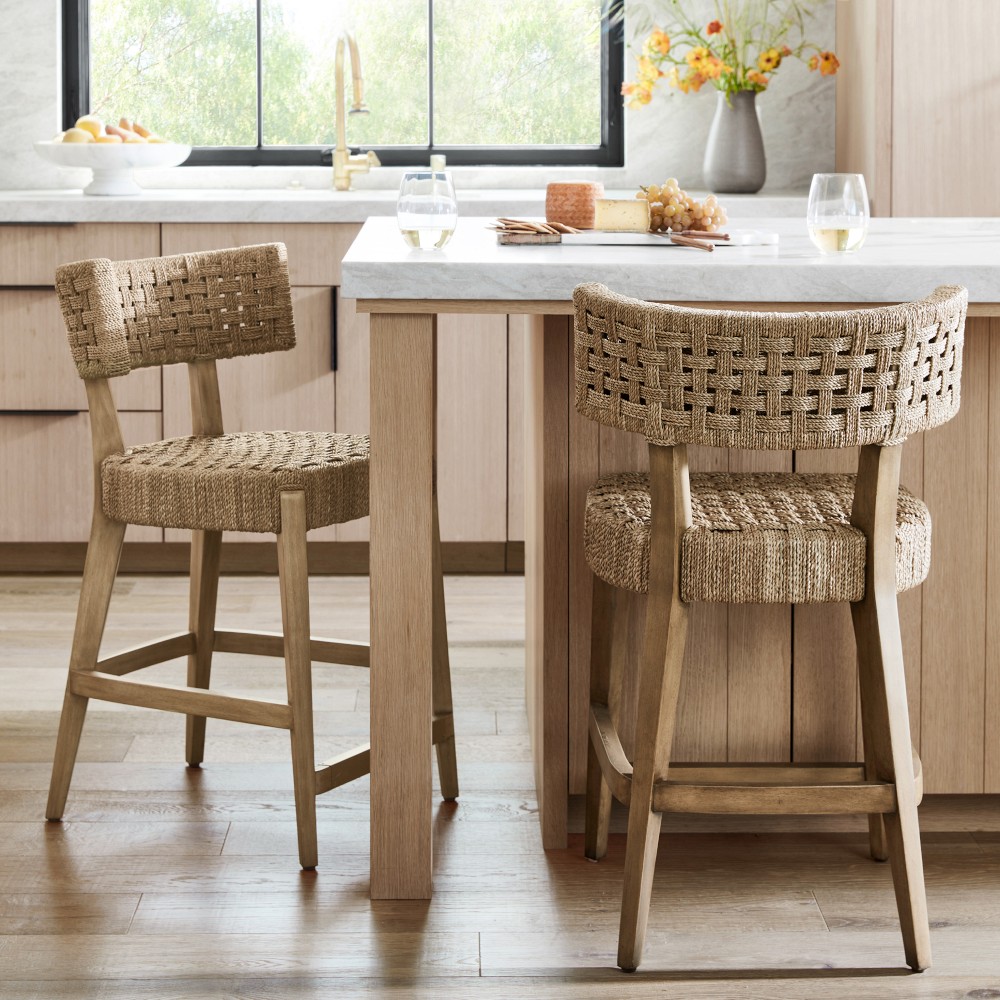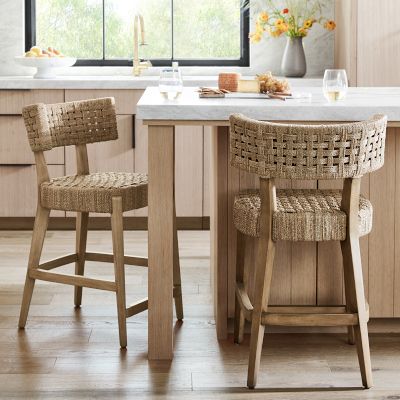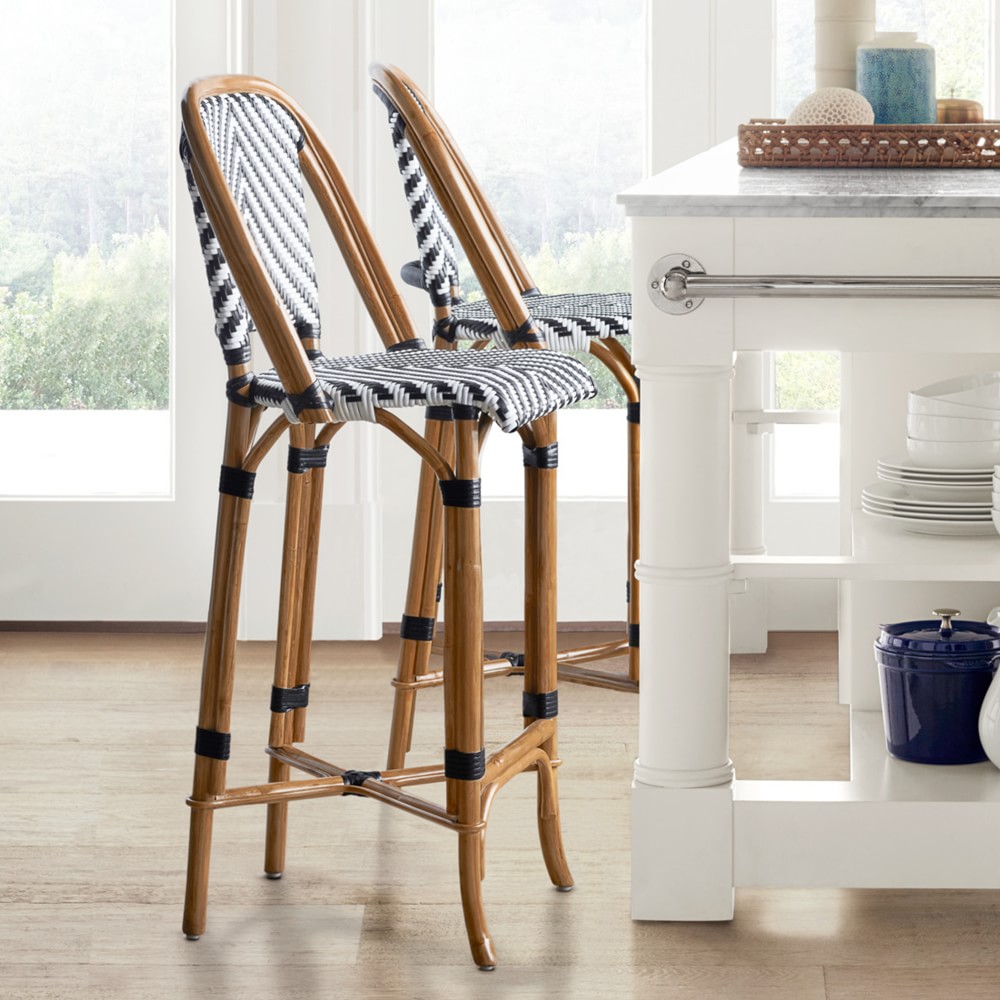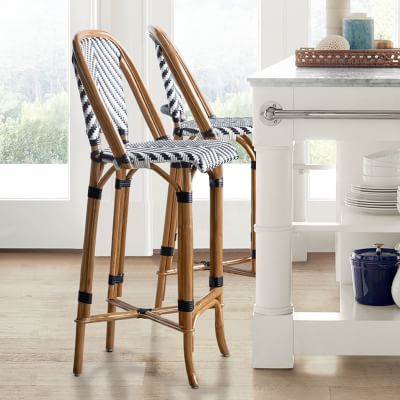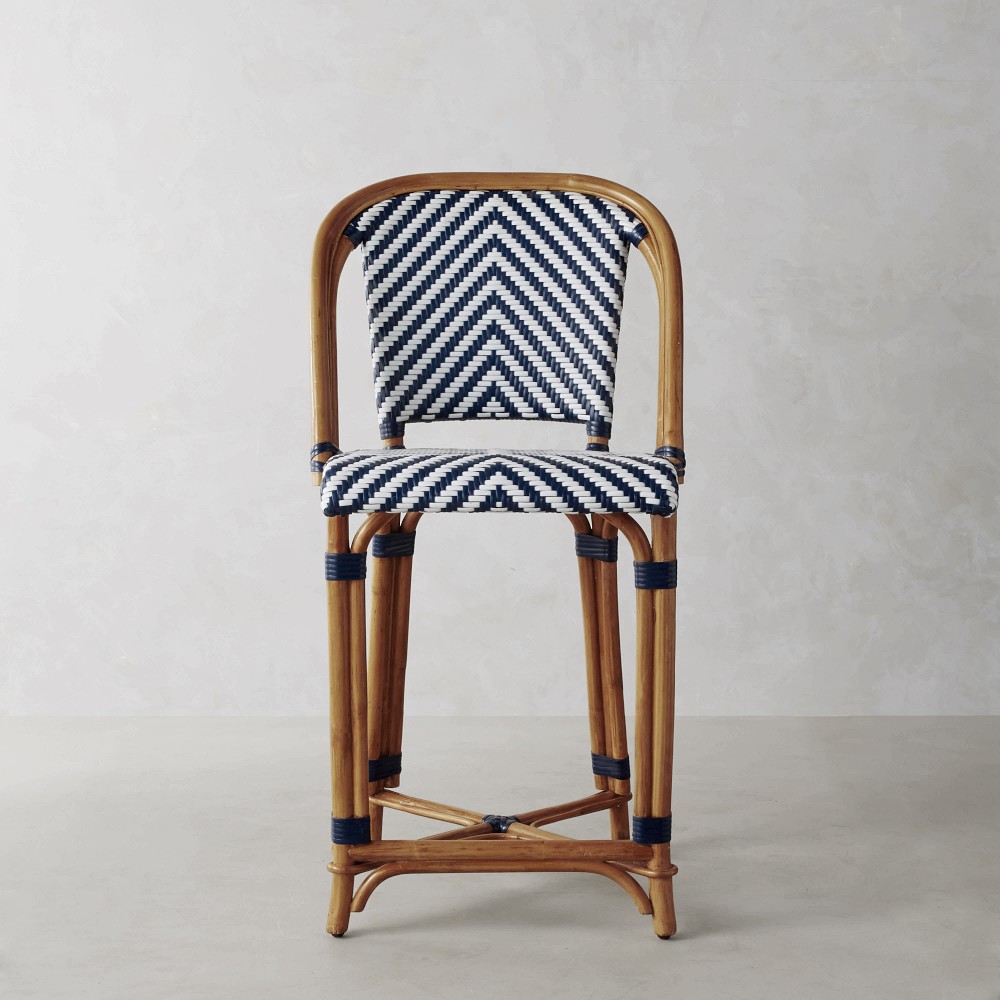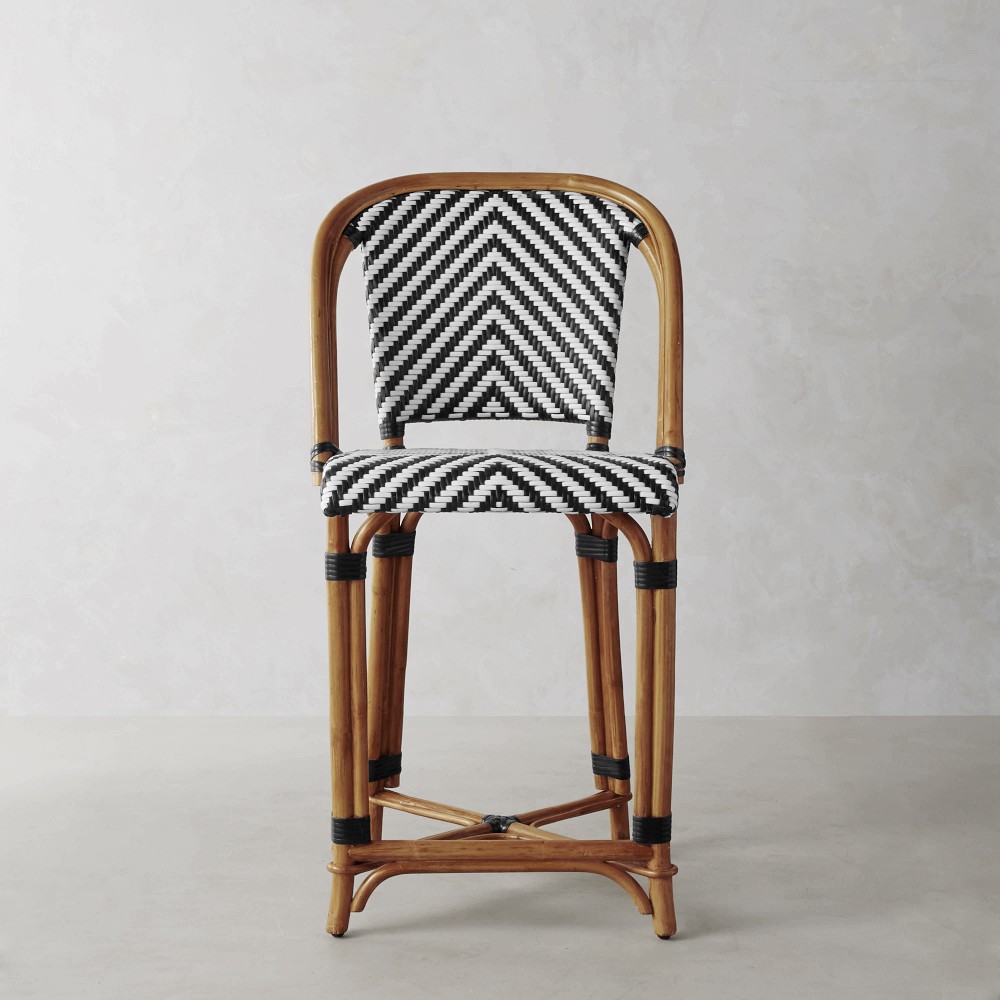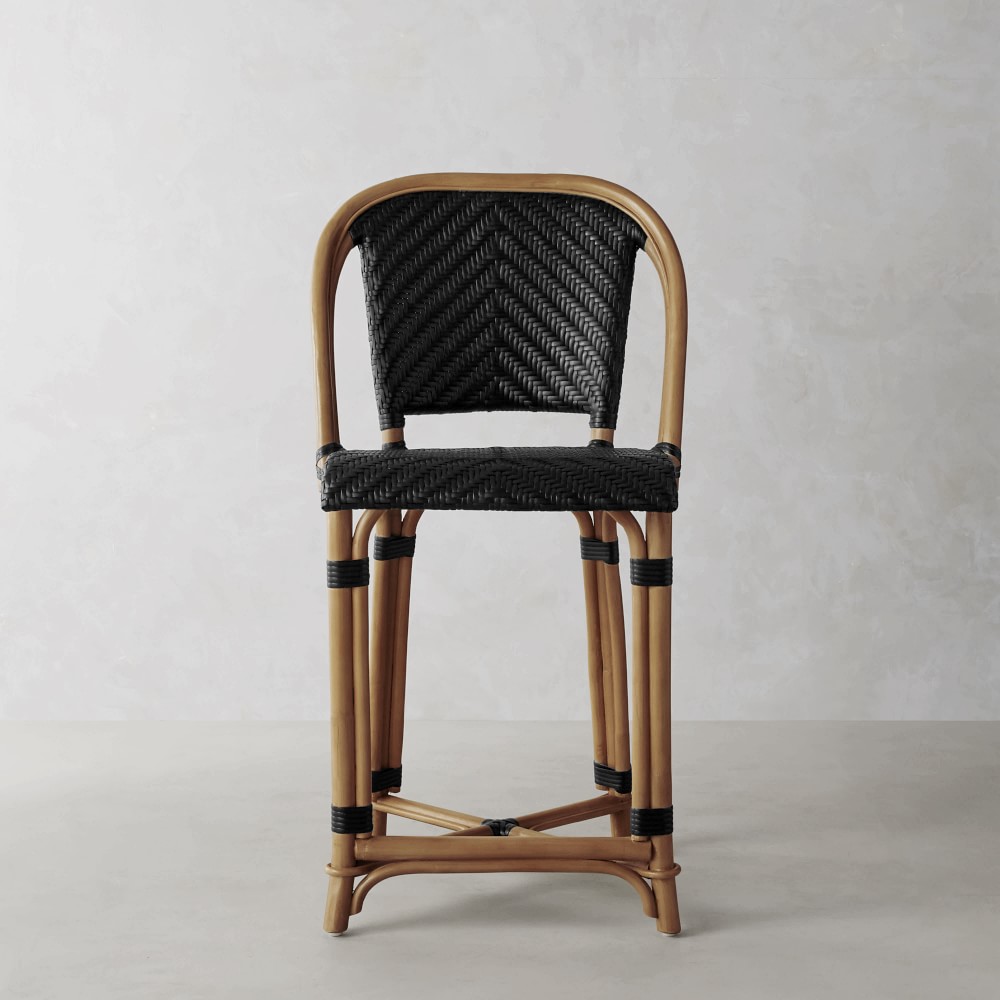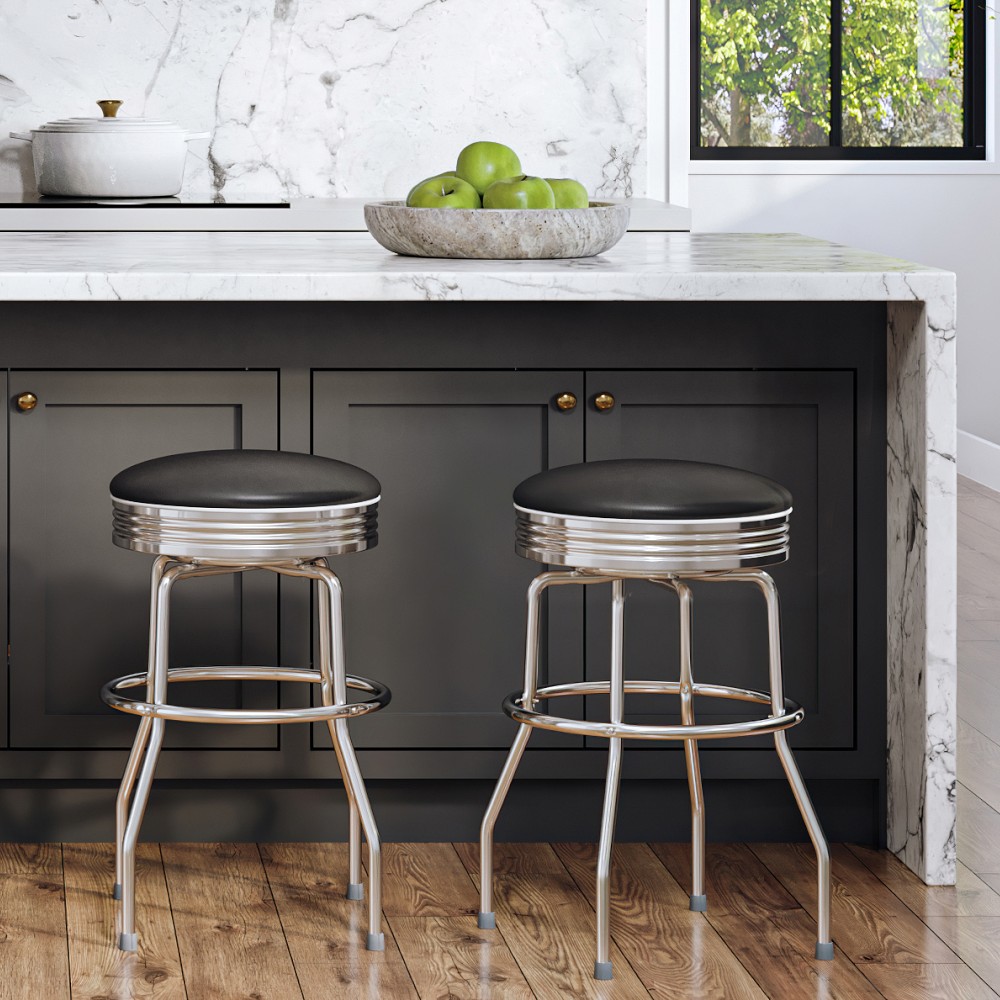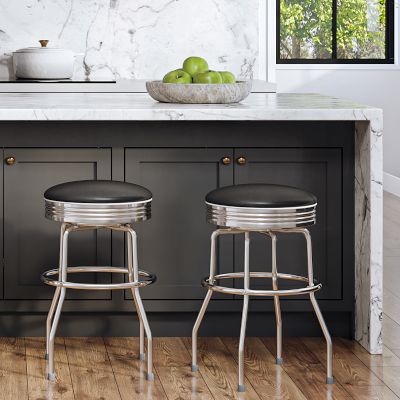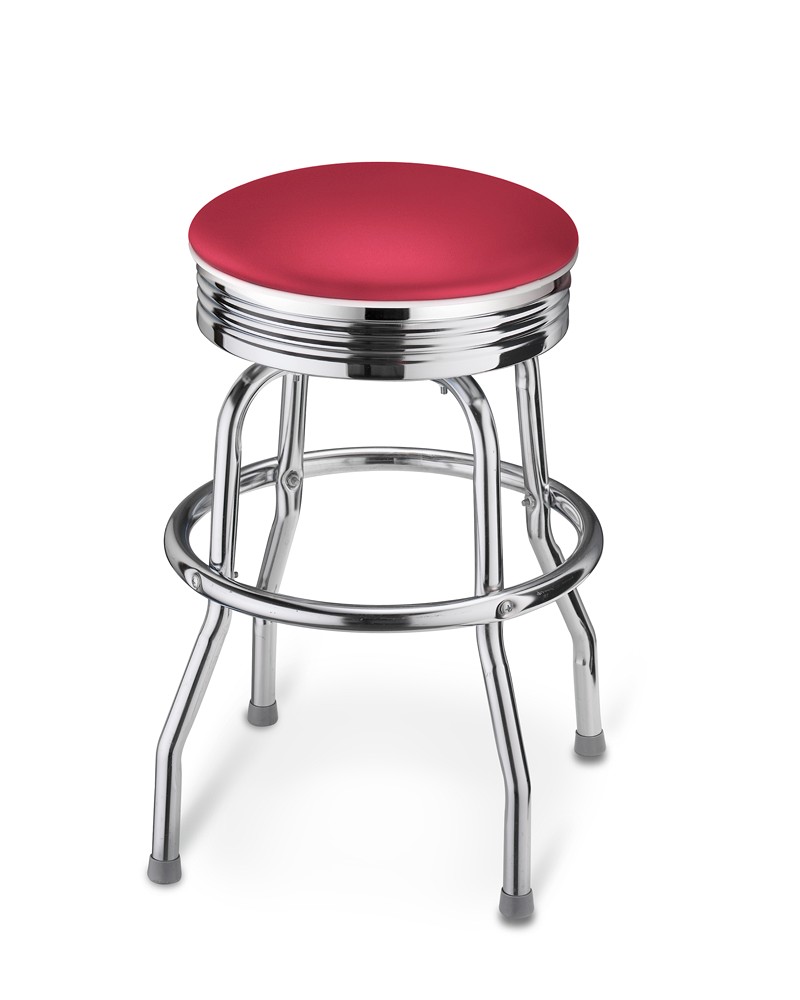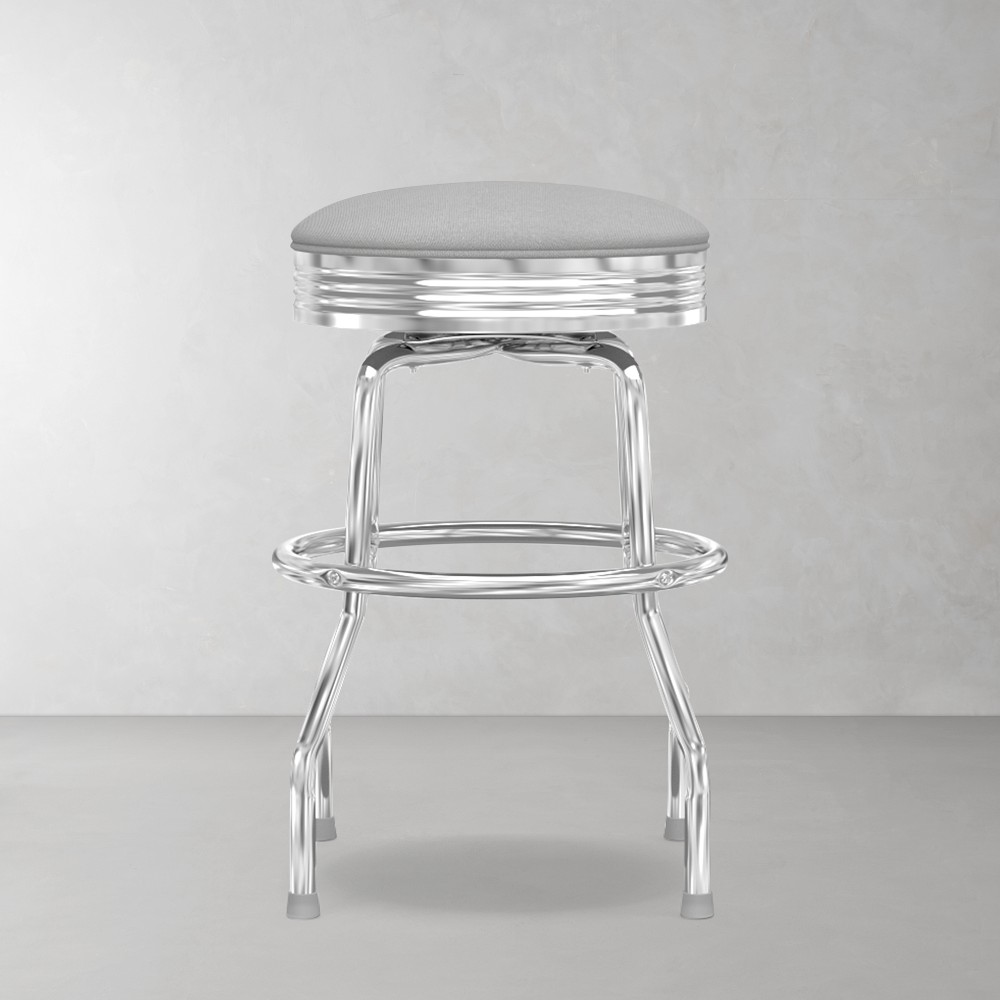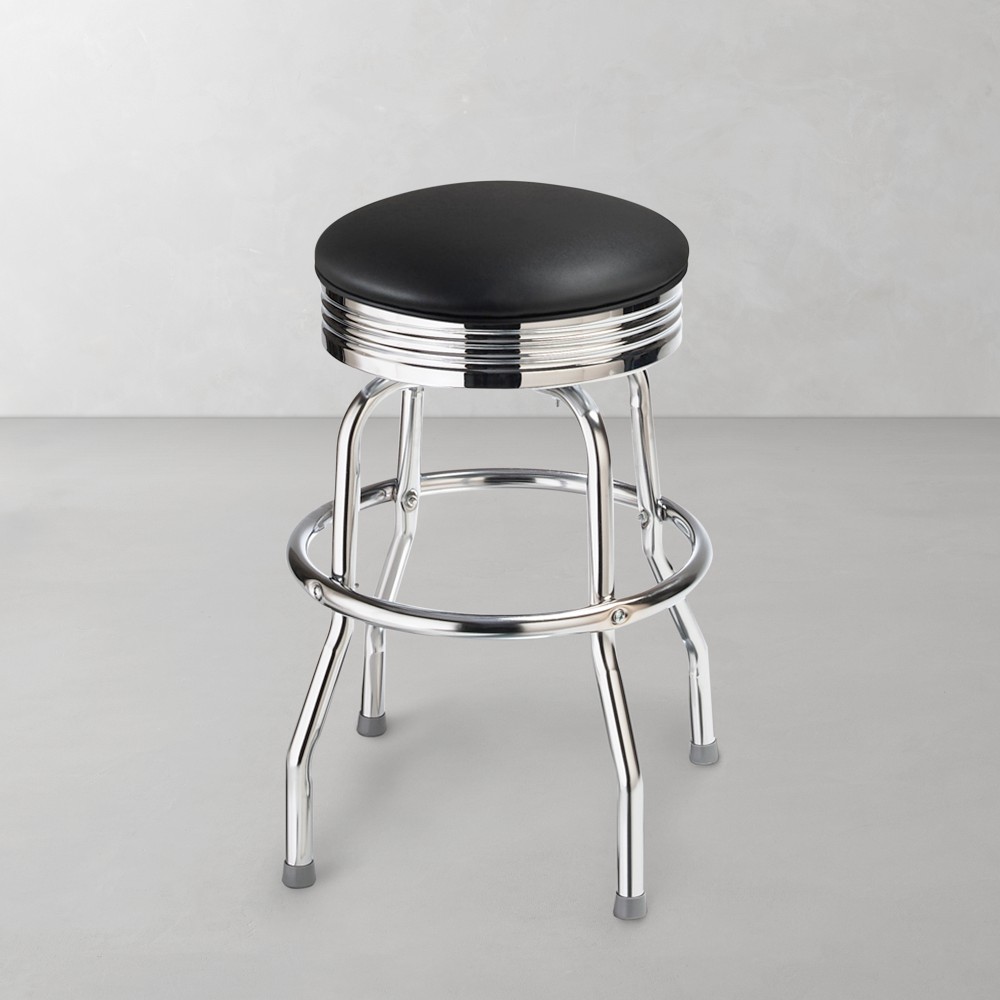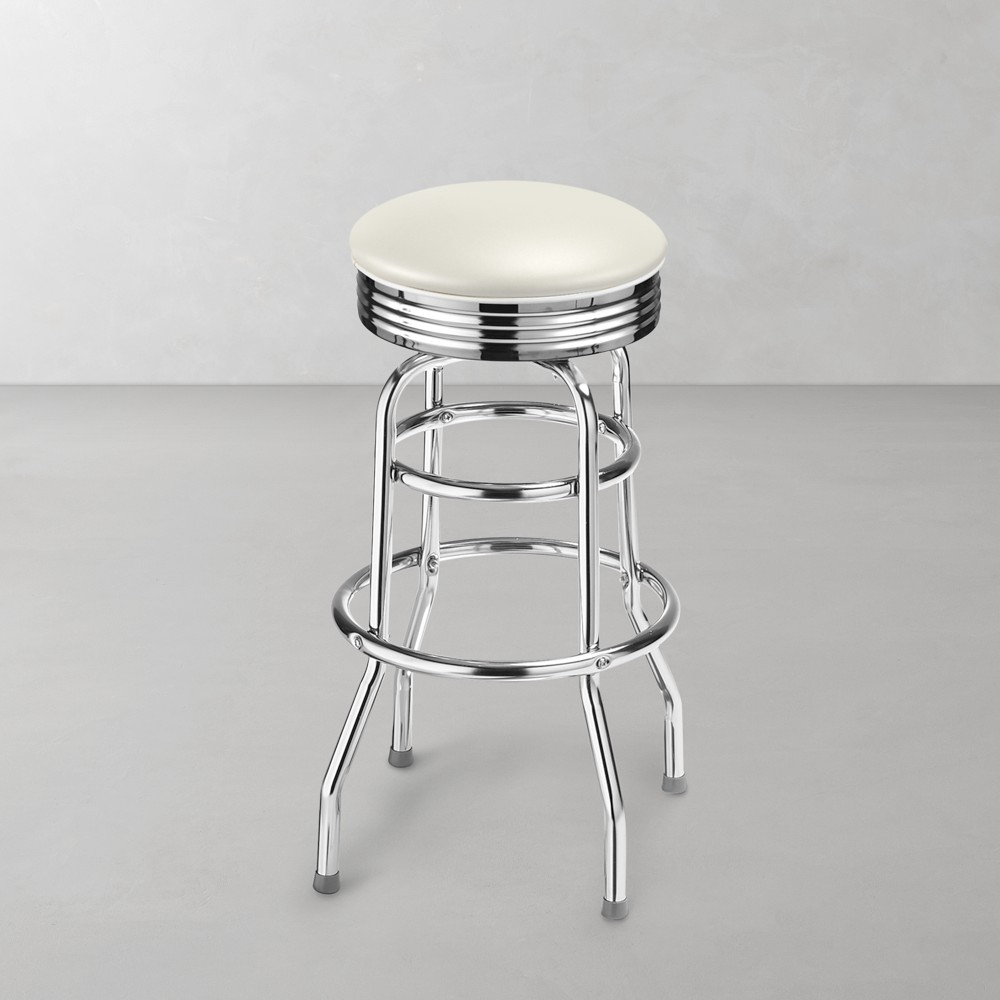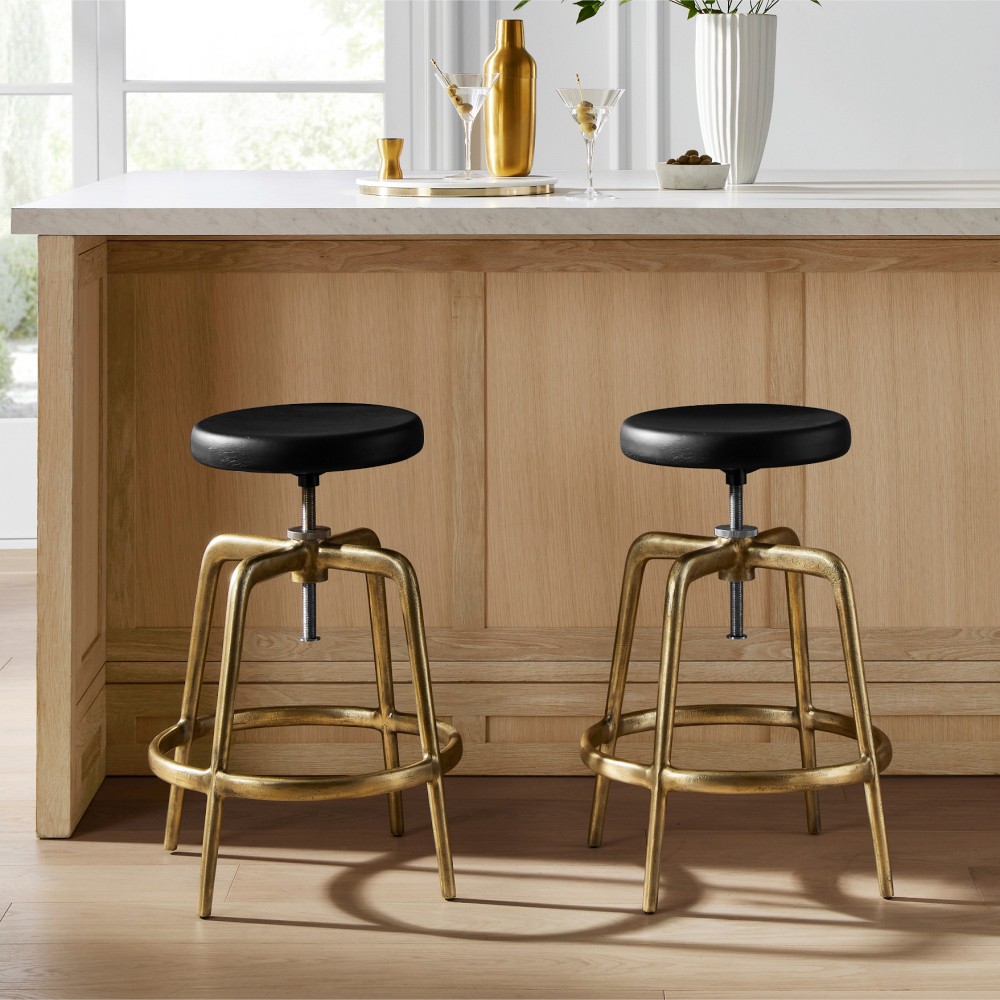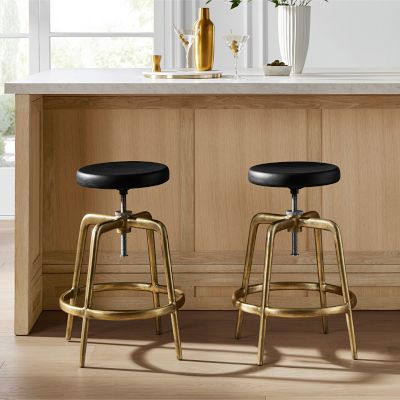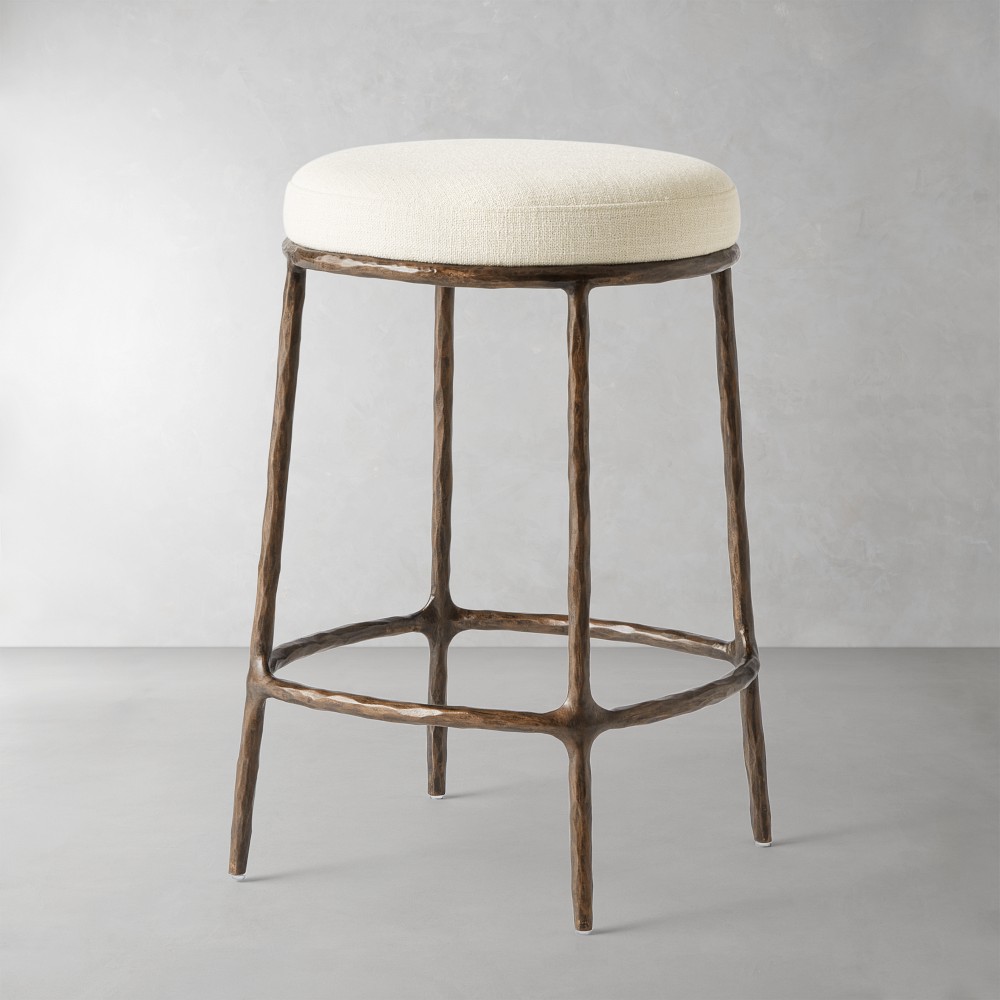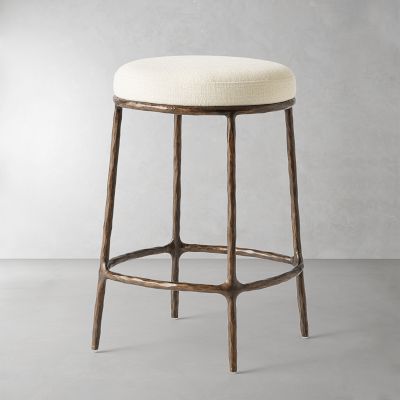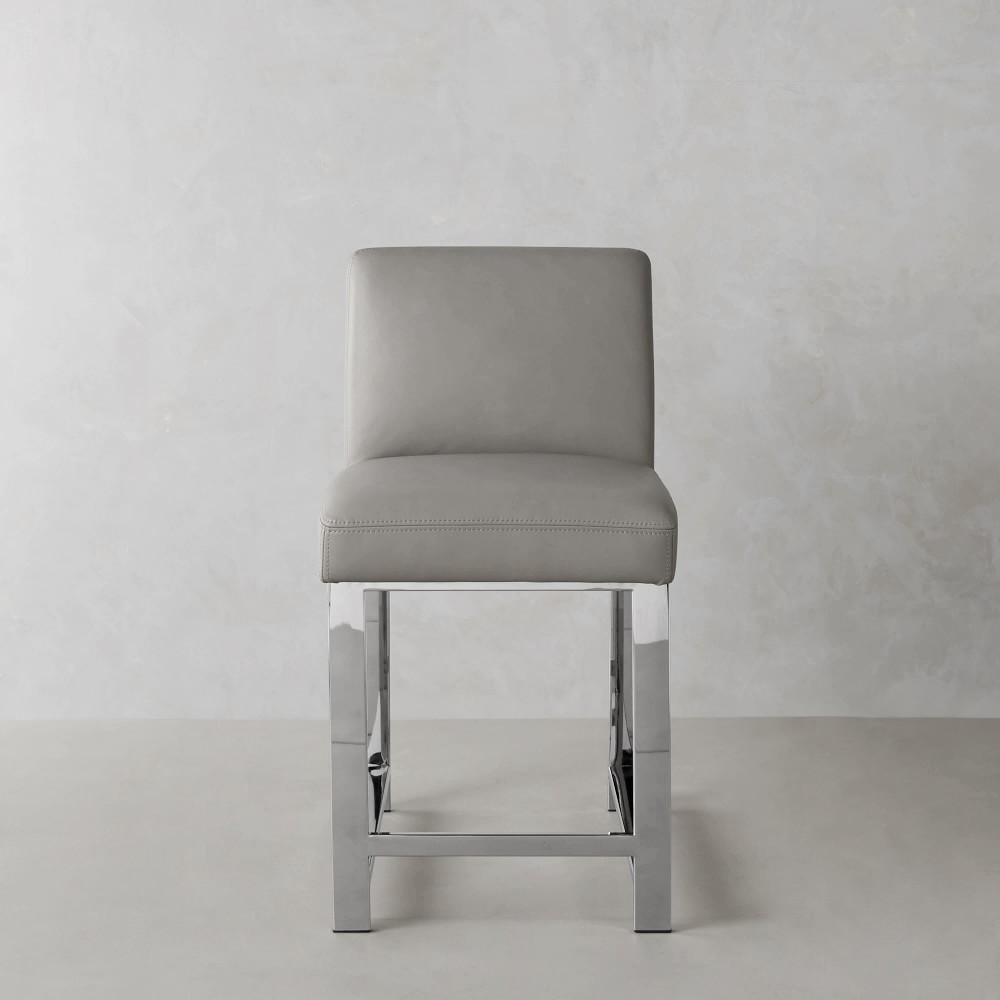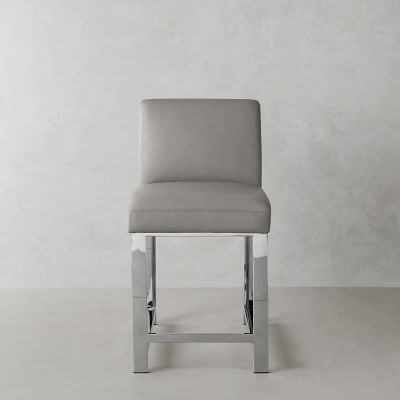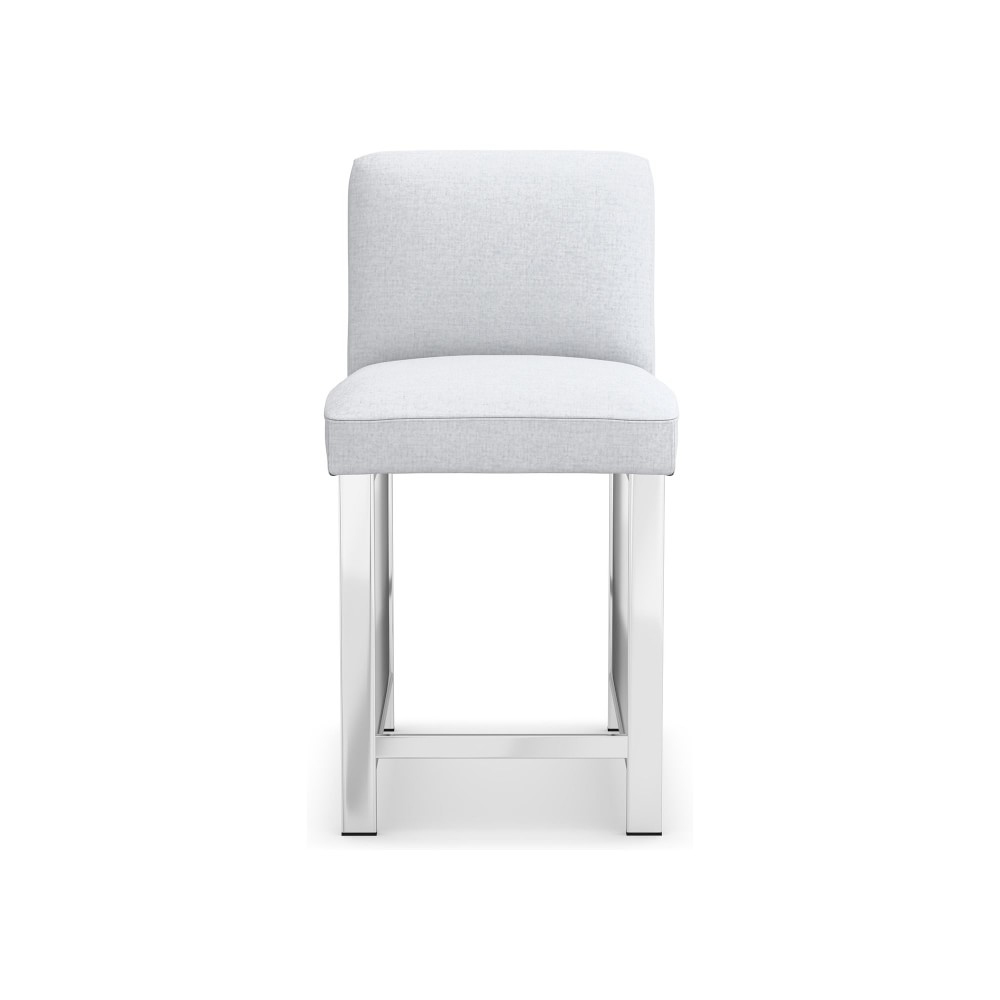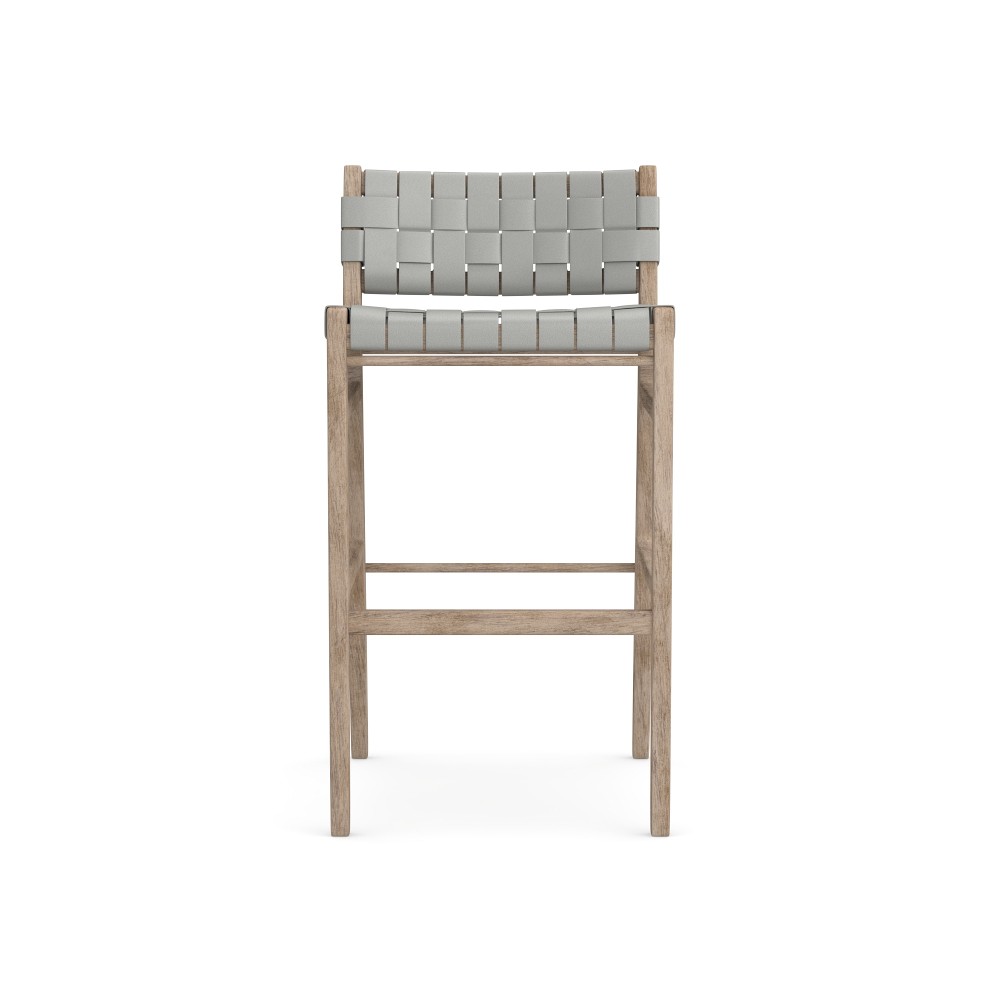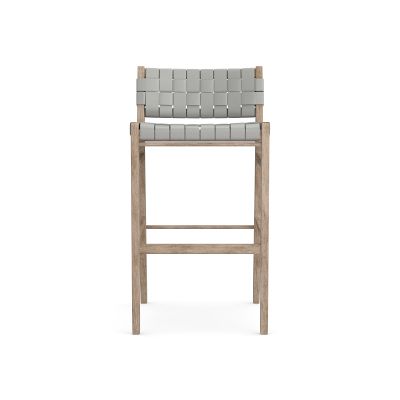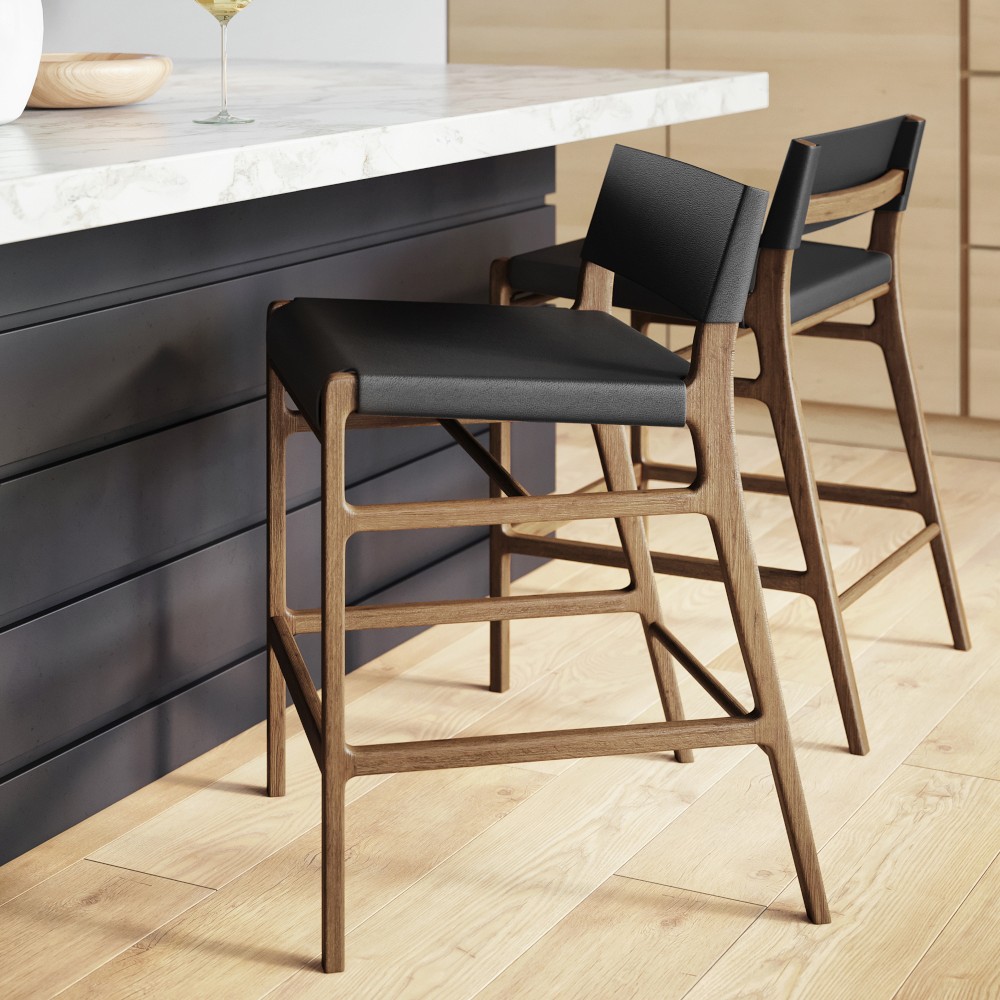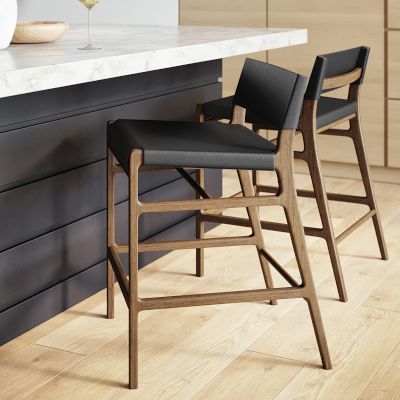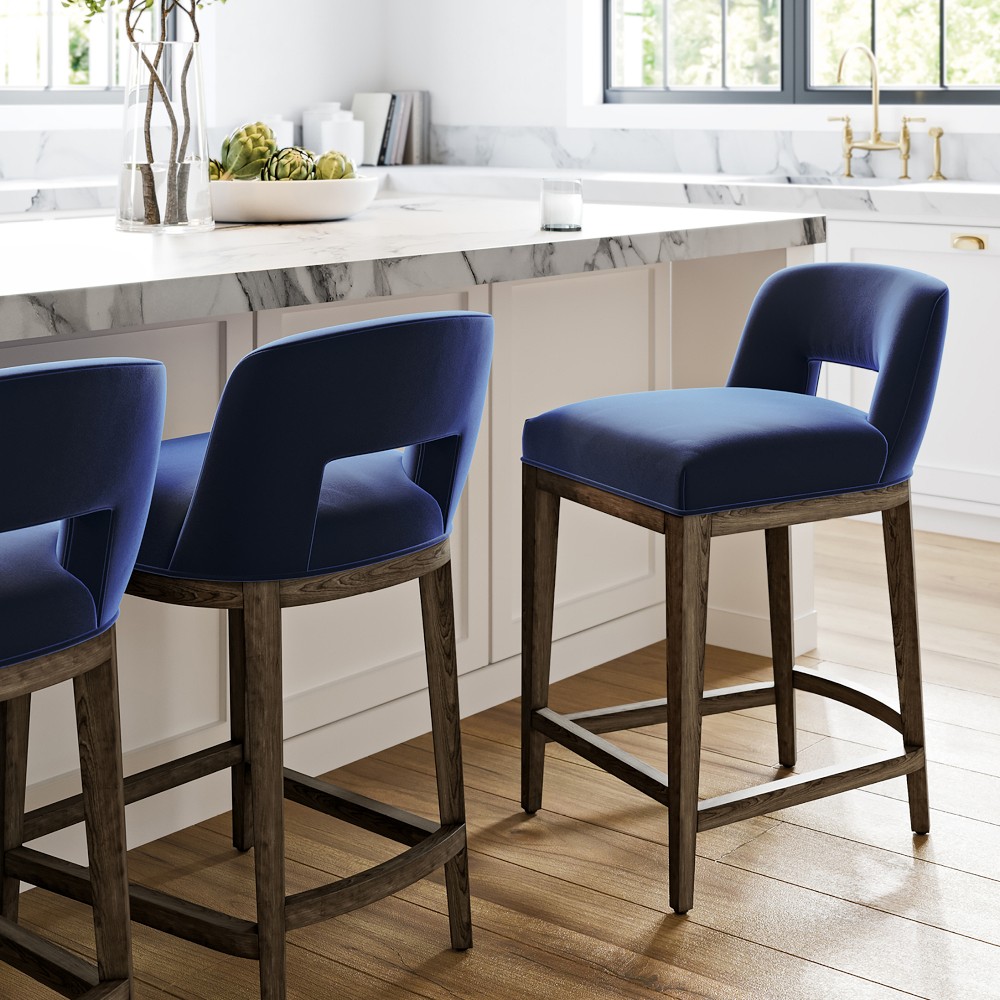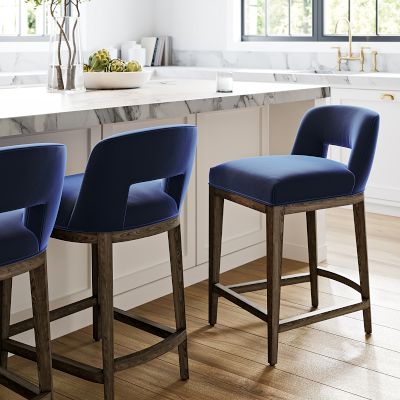-
Detail
Summary
KEY DETAILS
- Handcrafted in USA by skilled artisans using American and imported materials.
- Crafted from solid kiln-dried maple.
- Lambswool, Navy and River Rock feature a glazed painted finish.
- Stout has a stained finish.
- In-home delivery with White Glove Service.
Dimensions & More Info
DETAILED SPECIFICATIONS
Counter Stool
- Overall:
- 22"W x 18"D x 39"H.
- Seat height:
- 24.5".
- Seat depth:
- 16.5".
- Seat width:
- 18.5".
- Seat back height:
- 15.5".
- Distance between legs (at front):
- 20.5".
- Distance between legs (at sides):
- 19.5".
- Clearance under seat:
- 22.5".
- Weight capacity:
- 250 lb.
- Weight:
- 15 lb.
Bar Stool
- Overall:
- 22"W x 18"D x 45"H.
- Seat height:
- 30.5".
- Seat depth:
- 16.5".
- Seat width:
- 18.5".
- Seat back height:
- 15.5".
- Distance between legs (at front):
- 20.5".
- Distance between legs (at sides):
- 19".
- Clearance under seat:
- 28.5".
- Weight capacity:
- 250 lb.
- Weight:
- 14 lb.
CARE
Base
- Clean with a soft dry cloth.
- Avoid harsh cleaners (including ammonia-based glass cleaners) and abrasives as they will damage the finish.
Fabric
- Brush or vacuum regularly (use a nonmetallic stiff-bristle brush).
- Protect from direct sunlight to prevent fading.
- Dab spills immediately with a soft white cloth dampened with distilled water (not tap water). Test fabric cleaners first in an inconspicuous area. Do not saturate fabric with cleaner. Pat instead of rub to avoid altering texture. Clean stain from outer edge to prevent "circling."
- Thorough cleaning is recommended every 12 to 24 months. Do not wait for severe soiling. We recommend a professional in-home upholstery cleaning service.
Leather
- Never use detergents, polishes, preservers or saddle soap. They can remove natural oils.
- Dust or vacuum for routine maintenance.
- Do not place in direct sunlight; it will lighten or discolor leather over time.
- Dab spills immediately with a soft white cloth dampened in distilled water (not tap water). If spill penetrates leather, use lukewarm distilled water and a soft white cloth to massage stain and surrounding area. Blot with a dry cloth and allow leather to air dry.
- Most surface scratches will fade over time if you rub them with your fingertips. Friction and heat from rubbing helps to redistribute wax in surrounding areas to cover the scratch. Not all scratches have the same depth, and this may not work on deeper scratches.
Composition & Construction
- Our leather upholstered products are constructed from aniline leather. Only the top 5% of hides can be made into aniline leather, making it the finest available. The full-grain or top-grain leathers are soaked in transparent nontoxic dye, with no subsequent pigmented finish coats applied. Dye penetrates the hides, letting the natural grain show through. Our ivory leather is an exception to this process; it is semi-aniline dyed, with a layer of pigment applied afterwards.
- Anilines have natural markings that vary from hide to hide. They also have color variations due to the leather’s ability to accept dyes differently in various areas of a hide. Markings and shading distinguish genuine leather from man-made materials. Appreciating shade differences among hides also means appreciating them on individual furniture pieces, because no two pieces can be produced from a single hide.
- Our leathers appeal to customers who find the natural color variations, markings and patina of pure aniline leathers unique and beautiful. They may not appeal to customers who want uniform color and surface commonly seen on less expensive leathers that are heavily corrected and pigmented.
- Do not remove cushion casings for cleaning. Unlike slipcovers, upholstered casings are not meant to be removed.
Use & Care
Base
- Clean with a soft dry cloth.
- Avoid harsh cleaners (including ammonia-based glass cleaners) and abrasives as they will damage the finish.
Fabric
- Brush or vacuum regularly (use a nonmetallic stiff-bristle brush).
- Protect from direct sunlight to prevent fading.
- Dab spills immediately with a soft white cloth dampened with distilled water (not tap water). Test fabric cleaners first in an inconspicuous area. Do not saturate fabric with cleaner. Pat instead of rub to avoid altering texture. Clean stain from outer edge to prevent "circling."
- Thorough cleaning is recommended every 12 to 24 months. Do not wait for severe soiling. We recommend a professional in-home upholstery cleaning service.
Leather
- Never use detergents, polishes, preservers or saddle soap. They can remove natural oils.
- Dust or vacuum for routine maintenance.
- Do not place in direct sunlight; it will lighten or discolor leather over time.
- Dab spills immediately with a soft white cloth dampened in distilled water (not tap water). If spill penetrates leather, use lukewarm distilled water and a soft white cloth to massage stain and surrounding area. Blot with a dry cloth and allow leather to air dry.
- Most surface scratches will fade over time if you rub them with your fingertips. Friction and heat from rubbing helps to redistribute wax in surrounding areas to cover the scratch. Not all scratches have the same depth, and this may not work on deeper scratches.
Composition & Construction
- Our leather upholstered products are constructed from aniline leather. Only the top 5% of hides can be made into aniline leather, making it the finest available. The full-grain or top-grain leathers are soaked in transparent nontoxic dye, with no subsequent pigmented finish coats applied. Dye penetrates the hides, letting the natural grain show through. Our ivory leather is an exception to this process; it is semi-aniline dyed, with a layer of pigment applied afterwards.
- Anilines have natural markings that vary from hide to hide. They also have color variations due to the leather’s ability to accept dyes differently in various areas of a hide. Markings and shading distinguish genuine leather from man-made materials. Appreciating shade differences among hides also means appreciating them on individual furniture pieces, because no two pieces can be produced from a single hide.
- Our leathers appeal to customers who find the natural color variations, markings and patina of pure aniline leathers unique and beautiful. They may not appeal to customers who want uniform color and surface commonly seen on less expensive leathers that are heavily corrected and pigmented.
- Do not remove cushion casings for cleaning. Unlike slipcovers, upholstered casings are not meant to be removed.
-
Customer ReviewsNo comments
-
-
-
- Aarón Sánchez
- Aerin
- All-clad
- Anna New York
- Anyday
- Apilco
- Bake From Scratch®
- Birkenstock®
- Bissell
- Bordallo Pinheiro
- Boska
- Brabantia
- Breville
- Bridgerton
- Busatti
- Café™
- Cangshan
- Cartwright & Butler
- Casamigos
- Chef’n
- Chef’schoice
- Chilewich
- Christian Lacroix
- Coravin
- Corkcicle
- Crafthouse By Fortessa
- Cuisinart
- Cup Board Pro
- De Buyer
- De’longhi
- Demeyere
- Deshoulieres
- Disney
- Duraclear®
- Duralex
- Dyson
- Emile Henry
- Enclume
- Epicurean
- Fellow
- Finex
- Flour Shop
- Fortessa
- Fortnum & Mason
- Galaxy Desserts®
- Ge Profile™
- Global
- Goldtouch®
- Gray Malin
- Greenpan™
- Guy Degrenne
- Haden
- Harry Potter™
- Hestan
- Hold Everything
- Holmegaard
- Instant Pot
- Jean Dubost
- Jean-georges
- Jeff Leatham
- John Boos & Co.
- Joseph Joseph
- Josh Young
- Jura
- Kitchenaid®
- La Cornue
- Laguiole En Aubrac
- Le Creuset
- Lelit
- Lodge
- Lotus
- Mackenzie-childs
- Marlo Thomas
- Masaharu Morimoto
- Matouk
- Mauviel 1830
- Michel Bras
- Microplane®
- Miele
- Minted
- Miyabi
- Moccamaster By Technivorm
- Morris & Co.
- Muraglia
- Nfl
- Nespresso
- Nielsen-massey
- Nordic Ware
- Ooni
- Open Kitchen By Williams Sonoma
- Orrefors
- Oscar De La Renta
- Oxo
- Peanuts™
- Peugeot
- Philips
- Pickard
- Pillivuyt
- Rabbit
- Regalis
- Riedel
- Robert Welch
- Rory Dobner
- Rowenta
- Ruffoni
- Sanderson X Giles Deacon
- Scalamandré
- Scanpan®
- Schmidt Brothers
- Schott Zwiesel
- Shark
- Shelia Bridges
- Shun
- Silpat
- Implehuman™
- Smeg
- Smithey
- Stanley
- Stanley Tucci™
- Star Wars™
- Staub
- Stranger Things
- The George
- Traeger
- Trisha Yearwood
- Tyler Florence
- Usa Pan
- Vitamix
- Waterford
- Weber
- Wedgwood
- Wellnessmats®
- Williams Sonoma
- Woodford Reserve
- Wüsthof
- Yamazaki Home
- Yeti
- Zwilling
-
-
-
-
-
-
-
-
-
-
-
-
-
-
-
-
-
-
-
-
-
-
-
-

